Visiting Mexican Ruins: Everything You Need To Know
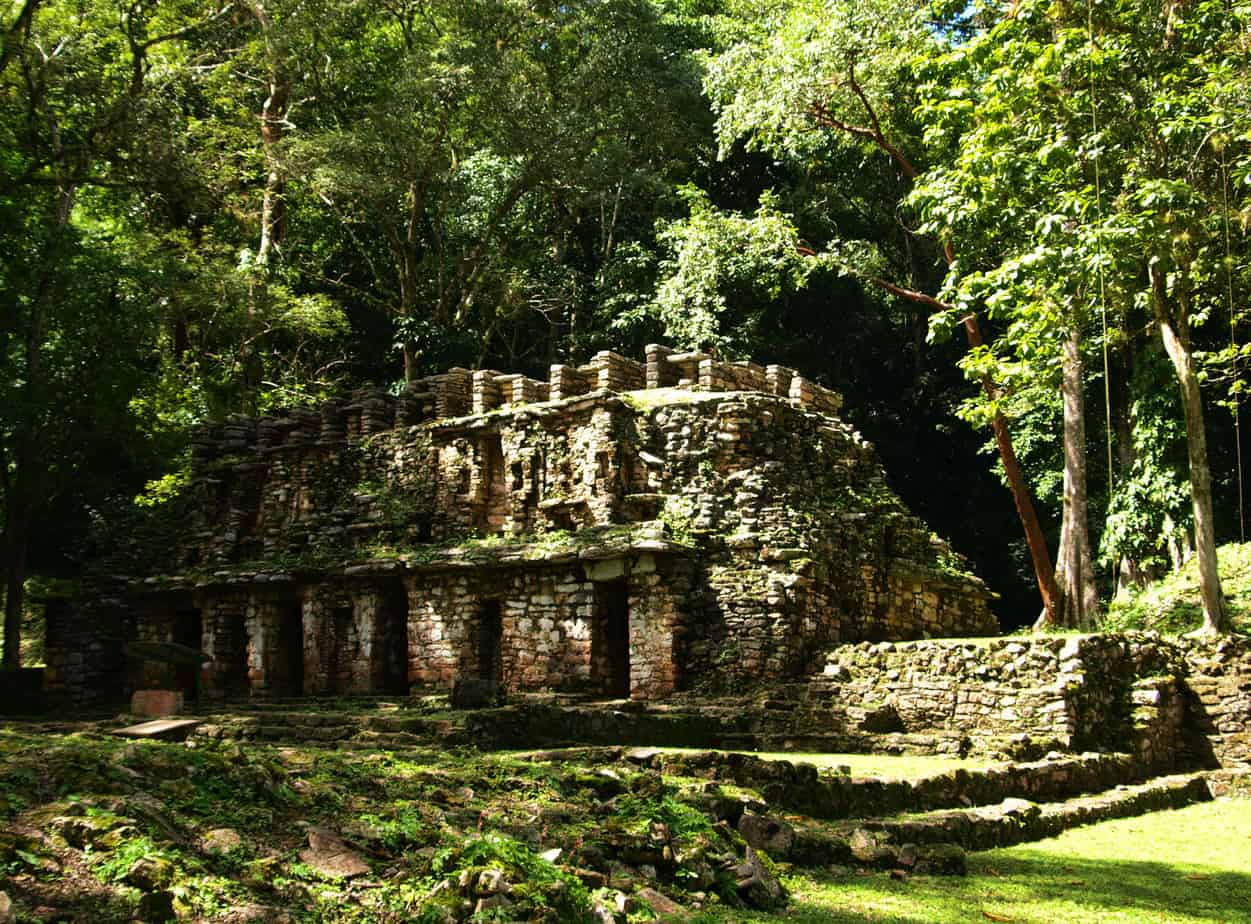
Update: April 2019
I’ve spent a lot of time in Mexico and am one-quarter of a family who LOVES visiting archaeological sites. We just can’t help ourselves. We just love to explore and it seems my India Jones tendencies have been passed on to my kids. My husband and I spent our honeymoon here in 2009 and rather than spend it in a beautiful hotel on an amazing beach, we spent it checking out some of the most interesting Mexican ruins whilst tasting as much mezcal and tequila as we could. Since moving to Merida with our kids along for the ride, we have spent a great deal of time checking out every ruin we could.
I’ve broken the article down by region: Mexico City, Oaxaca, Chiapas, Yucatan, Campeche and Quintana Roo. Feel free to skip to the region you’re after.
Note: I know we shouldn’t call archaeological sites ‘ruins’. It’s contentious and some people really don’t like it. I’m sorry. This article was first written a few years ago and I didn’t know that then. I’m not going to change the term in this particular article but do note that I have stopped using it in more recent work.
MEXICO CITY
TEOTIHUACAN
Our first ever Mexican ruin was the Aztec TEOTIHUACAN (birthplace of the Gods), located about 40km from Mexico City. It’s the most visited of all the archaeological sites in the country and it’s obvious that this is about more than proximity to the capital city. It’s immense. It was established around 100 BCE and inhabited until about 700 CE.
One of the benefits (we include this as a pro although maybe others don’t) is that you can climb up stuff here. Both the Sun and Moon Pyramids are open for climbing and they’re immense in both senses of the word.
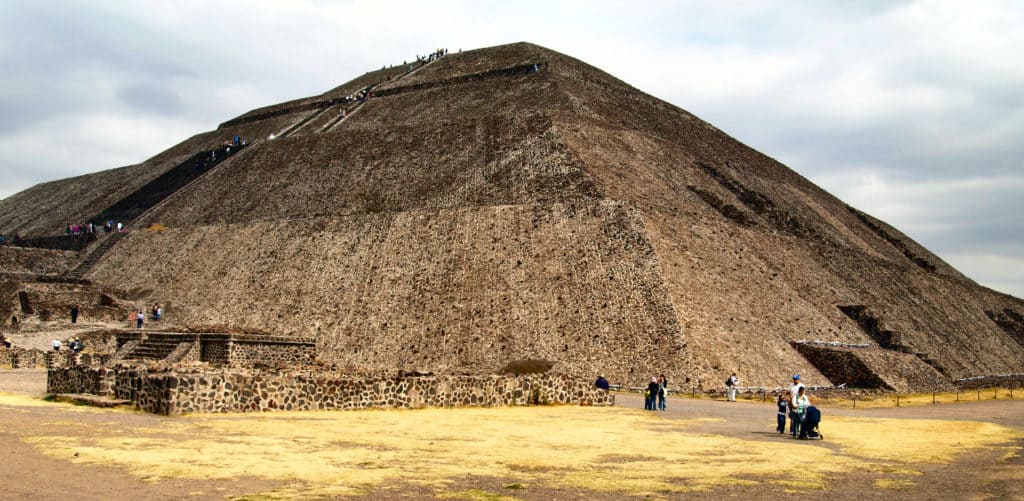
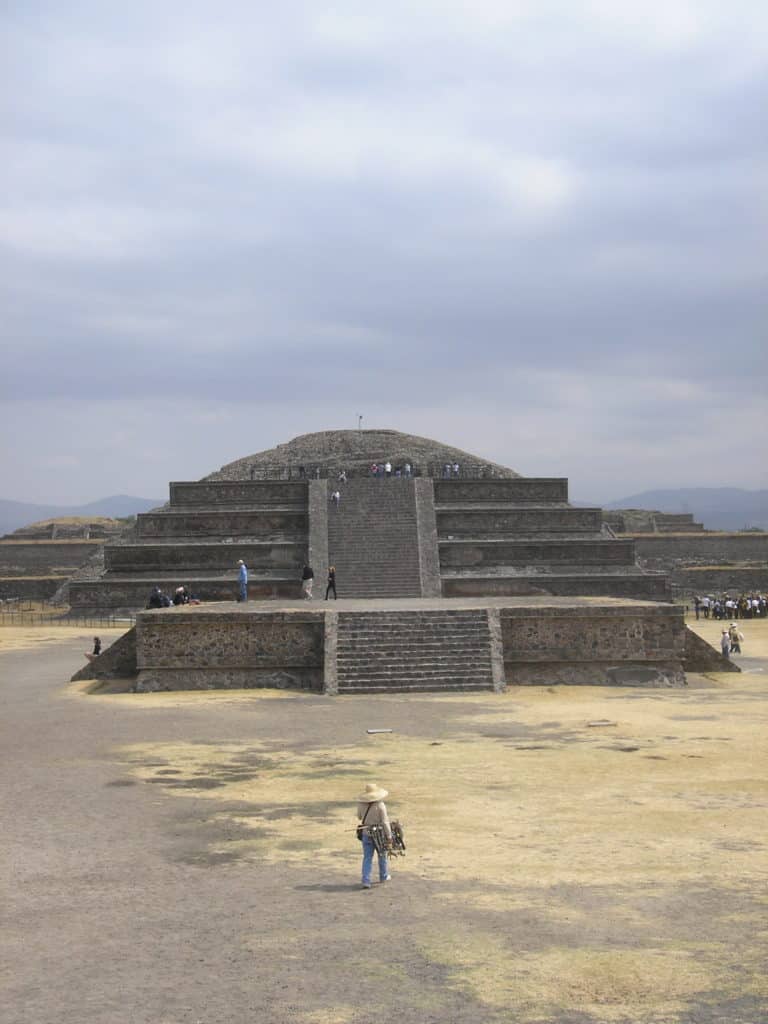

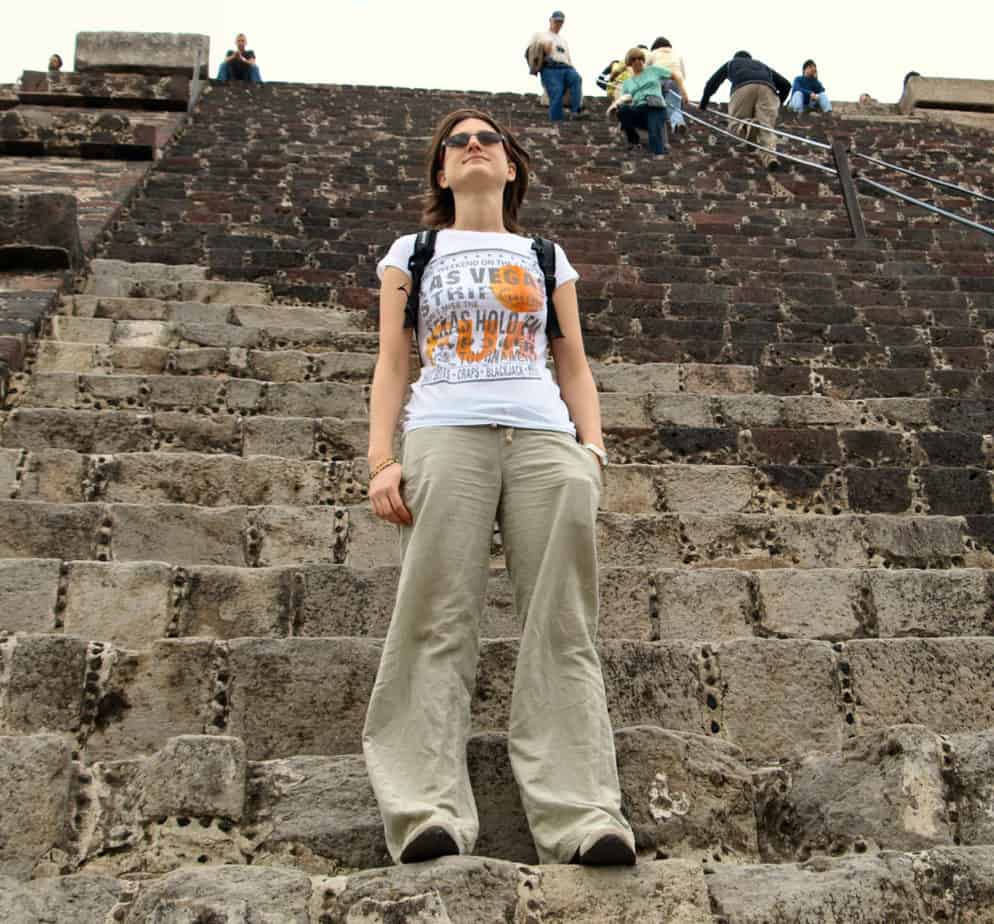
A very young Mexico Cassie on honeymoon falling in love with Mexico!
This site is huge and there isn’t much shade so water and a hat are vital. Well worth a visit.
To read more about exploring Mexico City with kids, follow this link – you won’t regret it!
OAXACA
Monte Alban
In 2009 our next stop was Oaxaca to visit Monte Alban. It may be obvious that we are quite smitten with both the city and this particular site. We began our family Mexico adventure, in 2016, with a month in Oaxaca and in that time took our kids to visit it twice. We have since taken them again, in 2017, they loved it so much.
The first time we went we made a mistake and forgot to take hats or sun cream. We paid with our dignity as we spent the next few days looking like lobster tourists. People, don’t forget the hats when visiting these places!
How to get to Monte Alban: Monte Alban is an easy bus ride from Oaxaca. I even heard people at our language school discussing walking there although I think they might have been a bit bonkers. It’s a good 40-minute bus ride UP from town. You can’t move around town without falling over people offering a bus ride here. All charge pretty much the same price for a return ticket.
Monte Alban is the Zapotec city from whence they ruled the central valleys of Oaxaca. It was occupied from 500 BCE to about 900 CE. It stands on the hills about 400m above the surrounding valleys and has the most incredible views.
It never seems to be very full and this adds to the magic – there really is something special about walking around an ancient site without hordes of others around. Monte Alban is basically a huge (and I mean huge) flat area with a few buildings on each side and one in the middle. One can climb up massive steps at either end to explore a bit more and marvel at the incredible views over the surrounding area:

See, empty. The cafe isn’t bad and there are loads of hummingbirds everywhere. Monte Alban was the first place we saw the ‘clapping trick’ – all Mexican guides love to demonstrate the majesty of the sites by getting people to clap and hear how the sound is amplified around the site.
Mitla
Mitla is a much smaller site about 50kms from Oaxaca. We visited here as part of a day trip that took in Hierve El Ague and other sites in the area.
It seems to have been an area reserved just for important groups of Zapotecs. This is one of the few sites where we have had a guide to explain the history to us and it was fascinating. Often, because we have small kids, we opt to just explore on our own, but having the guide here meant one of us managed to learn something interesting.
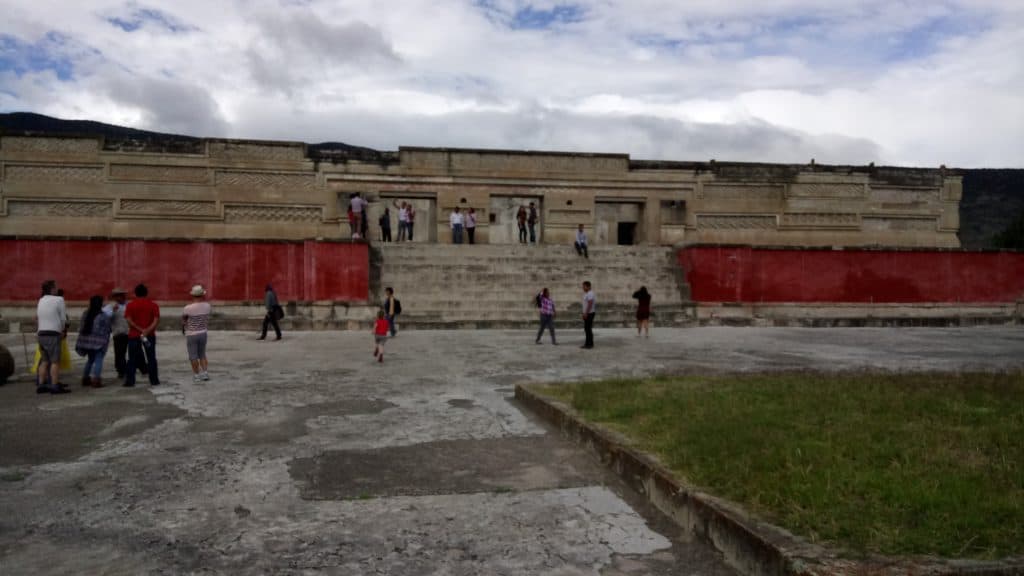
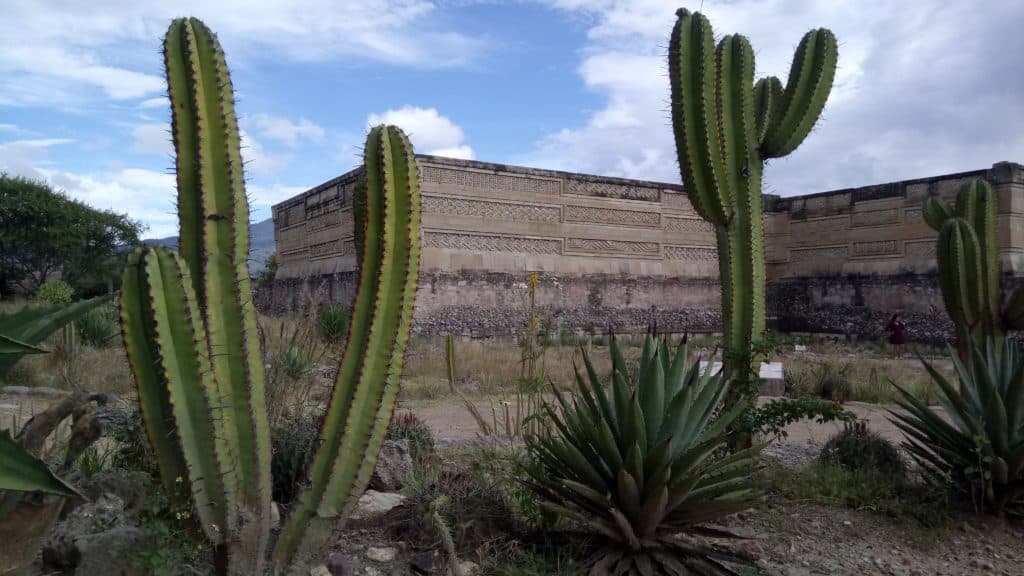
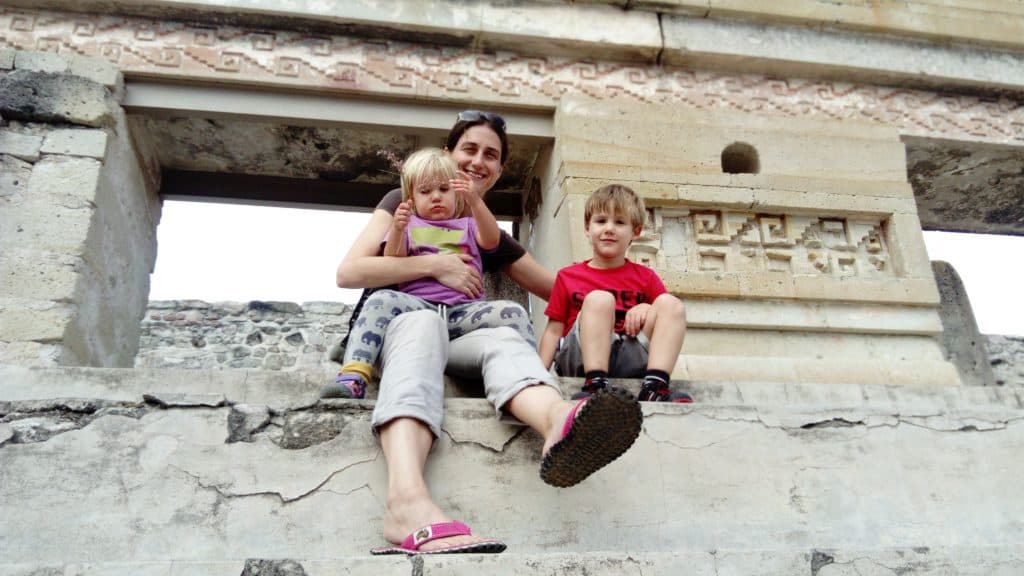
Mexico Cassie and very small children
CHIAPAS
Palenque
This is a really important site in Chiapas. It was inhabited from around 200 BCE to about 700 CE. We visited in 2009 driving from Oaxaca. These ruins are considered to be a national treasure and are one of the best examples of Maya architecture in Mexico (sentence swiped directly from the Lonely Planet). There are loads of buildings to explore in this jungle site and even some that can be climbed. Much of it hasn’t been excavated yet.
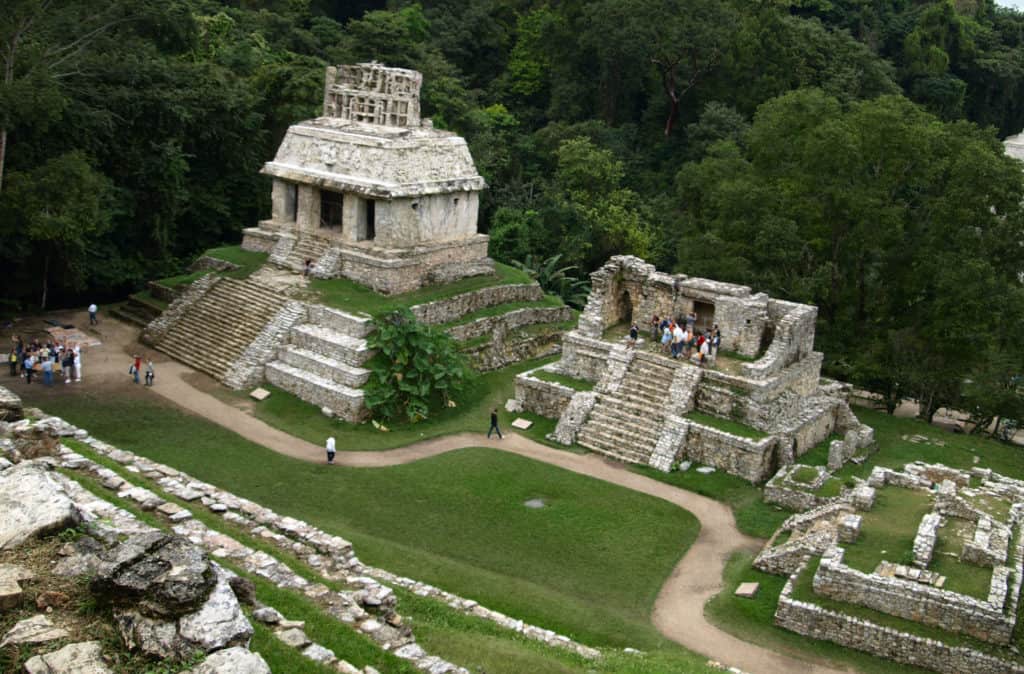
Palenque, Mexico
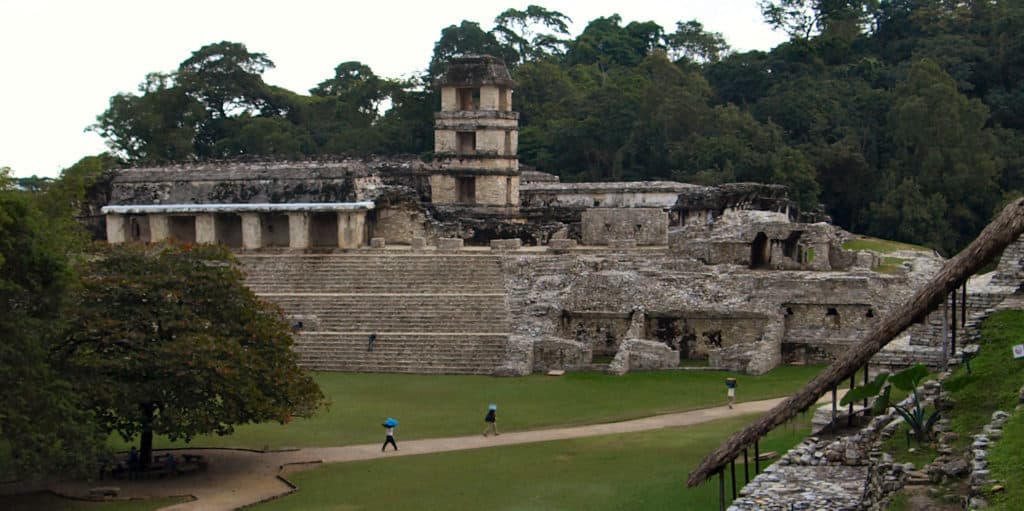
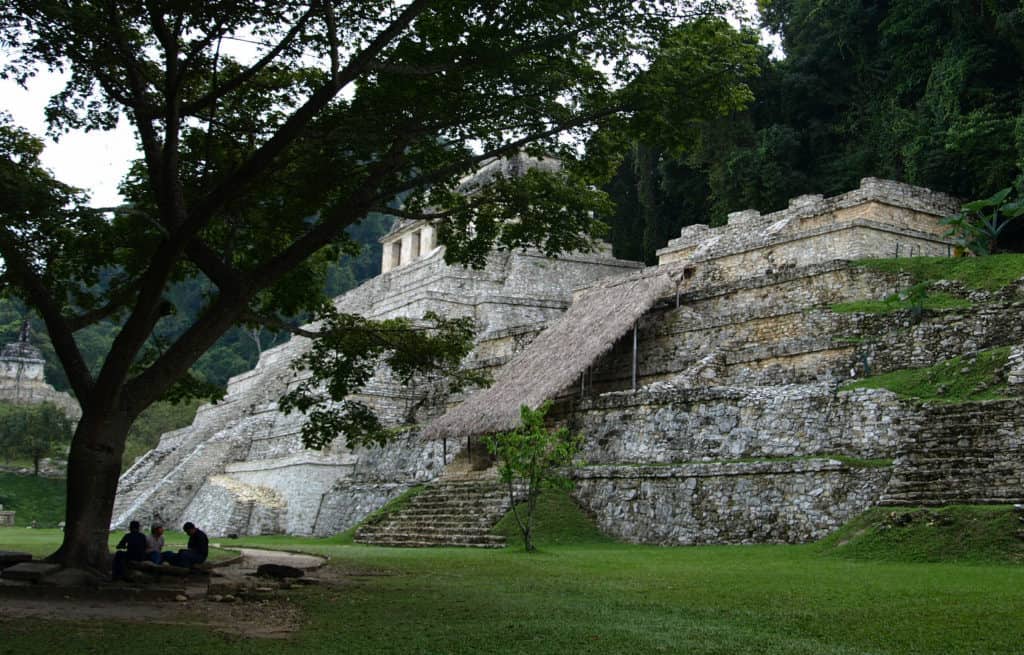
Booking.com
Yaxchilan
Our final amazing ruin on our honeymoon was Yaxchilan, right on the border with Guatemala. We drove here, getting more and more pissed off with the topes (speed bumps) that littered the road and prevented a smooth drive from Palenque. This is a much younger site than others we have visited. It seems to have been built in the 4th century CE.
To get here you drive to the town of Yaxchilan, on the river Usumacinta, and then take a forty-minute boat ride from Frontera Corozal. These small boats take you through the jungle and drop you off by the ruins. I remember this feeling like one the remotest places I’d ever been (Tibet was yet to come in our exploration but Namibia had been visited to give context). We were almost entirely alone on this jungle site, playing at being Indiana Jones as we explored and jumped and played as only newlyweds on a super romantic honeymoon(!) can do. We saw monkeys, commented on how British health and safety teams would find much to complain about, and marvelled at our luck at being able to visit here.
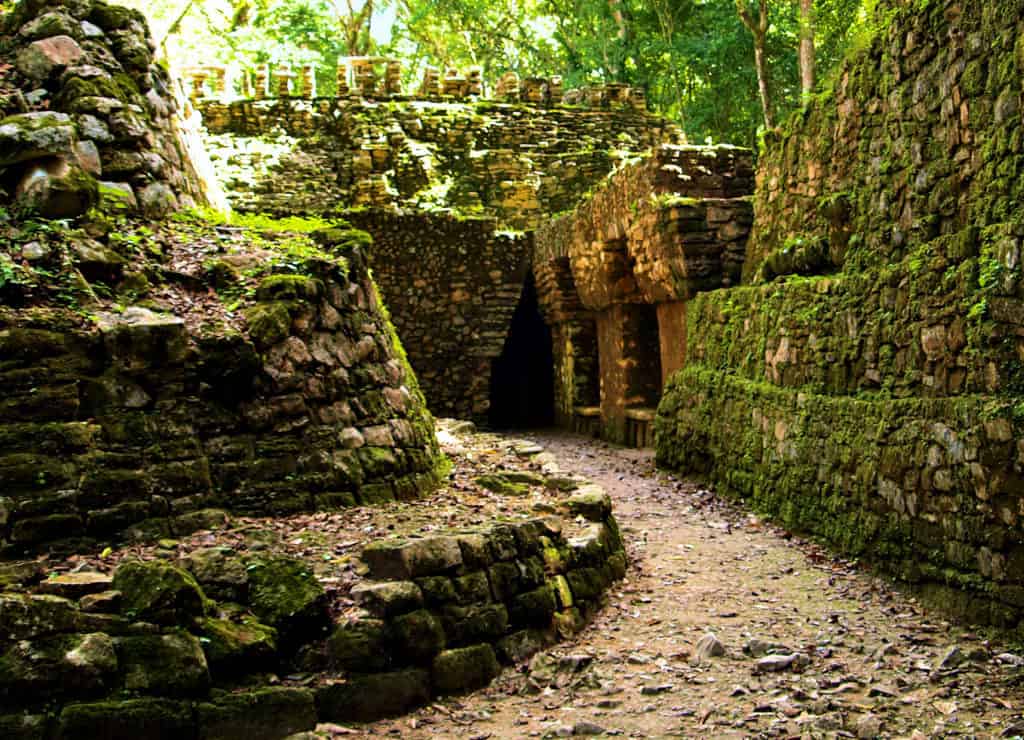
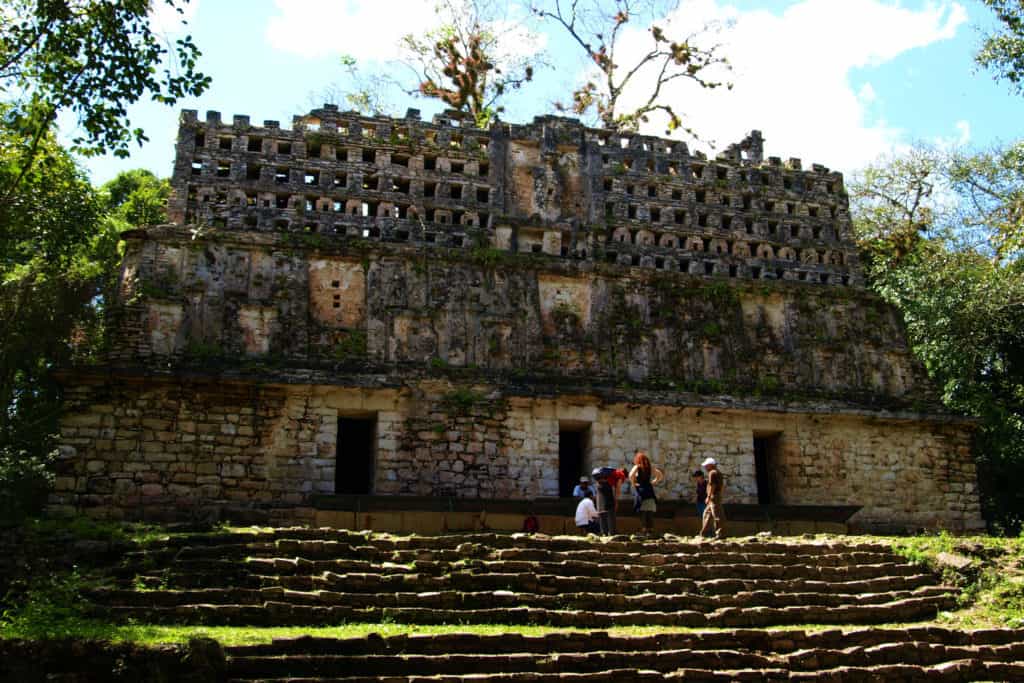
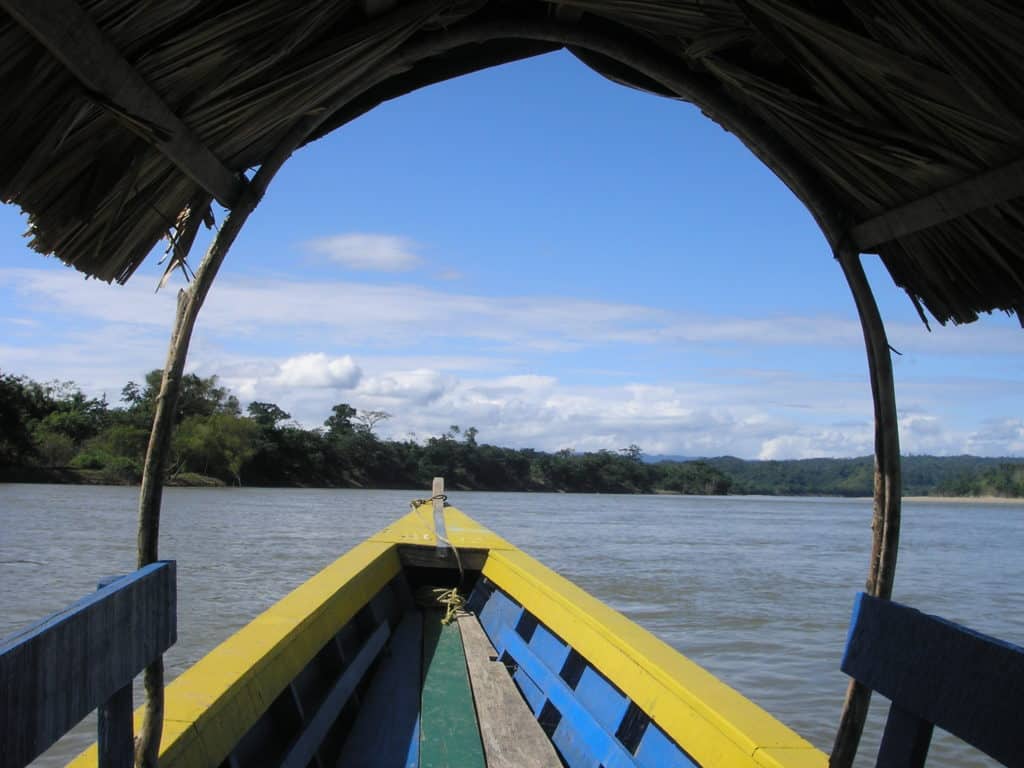
YUCATAN
Chichen Itza
There is no doubt that Chichen Itza is justly famous. It’s a modern wonder of the world and yes, it’s stunning. It’s also very, very busy so you’ll need to be prepared for crowds if you don’t get there early.
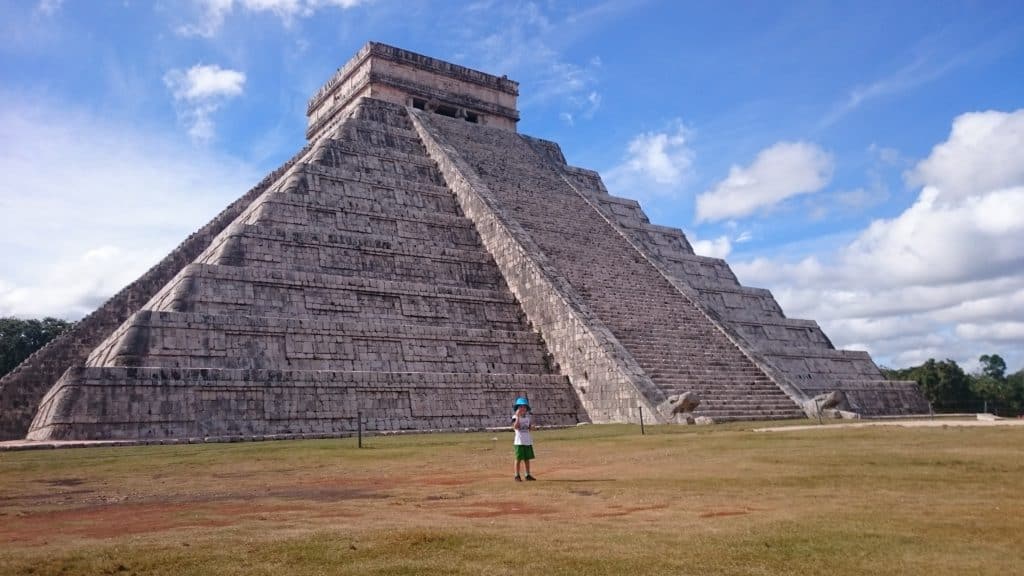
Chichen Itza is also quite young, with El Castillo (the pyramid above) being built in about 800 CE.
If you’d like to read more about cenotes and how to visit them, follow this link.
Ek-Balam
Ek Balam is a quieter site on the other side of Valladolid. It was abandoned in the eighth century and much of it is still covered with jungle but what has been excavated is wonderful.
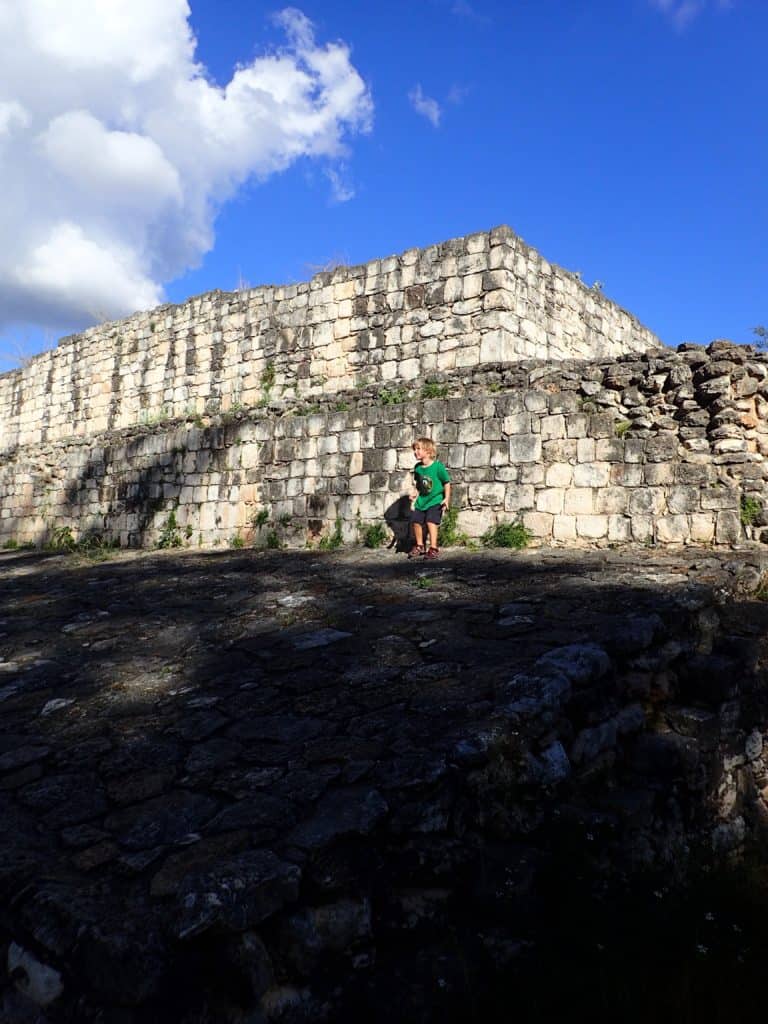

To read more about exploring the stunning Caribbean island of Holbox, click here.
Dzibilchaltun
Dzibilchaltun is a far smaller site not far from Merida. It was the longest continuously utilised Maya administrative and ceremonial city, in use from around 1500 BCE until it was conquered by the Spanish in around 1540 CE. Twice a year, on the equinoxes, the sun shines directly through the main temple. Sadly, we didn’t see this, but we did see the temple and we did have fun clambering around the bits we could climb on. It also has its own cenote on site, which can be fabulous if you’re there when it’s quiet.
Do note that this is a very popular site to visit for the cruceros (cruise ship passengers) so there are often a large number of visitors on site.
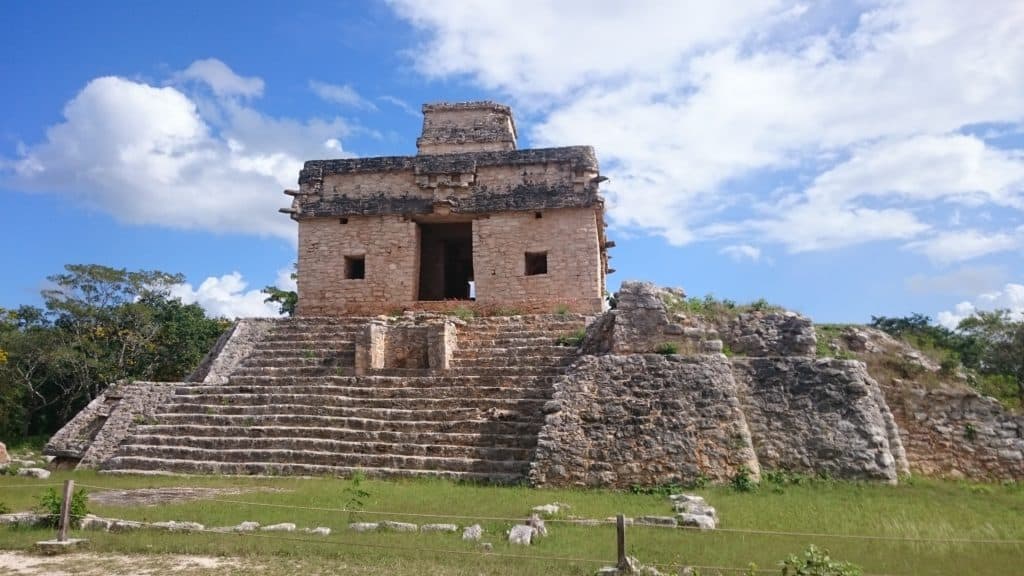
Mayapan
This is one of my favourite sites in the whole of Mexico. It’s so atmospheric and quiet. Mayapan’s heyday was between 1220s-1440s, just before the arrival of the Spanish, when it was the political and cultural capital of the Maya people.
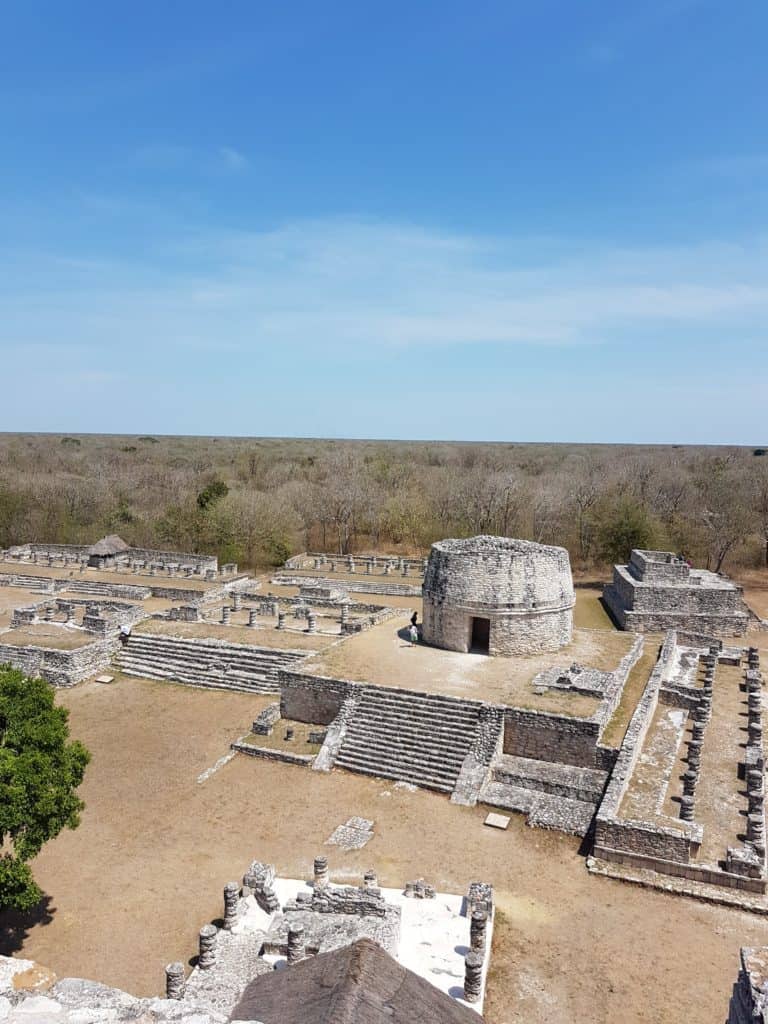
View From Top Of Mayapan
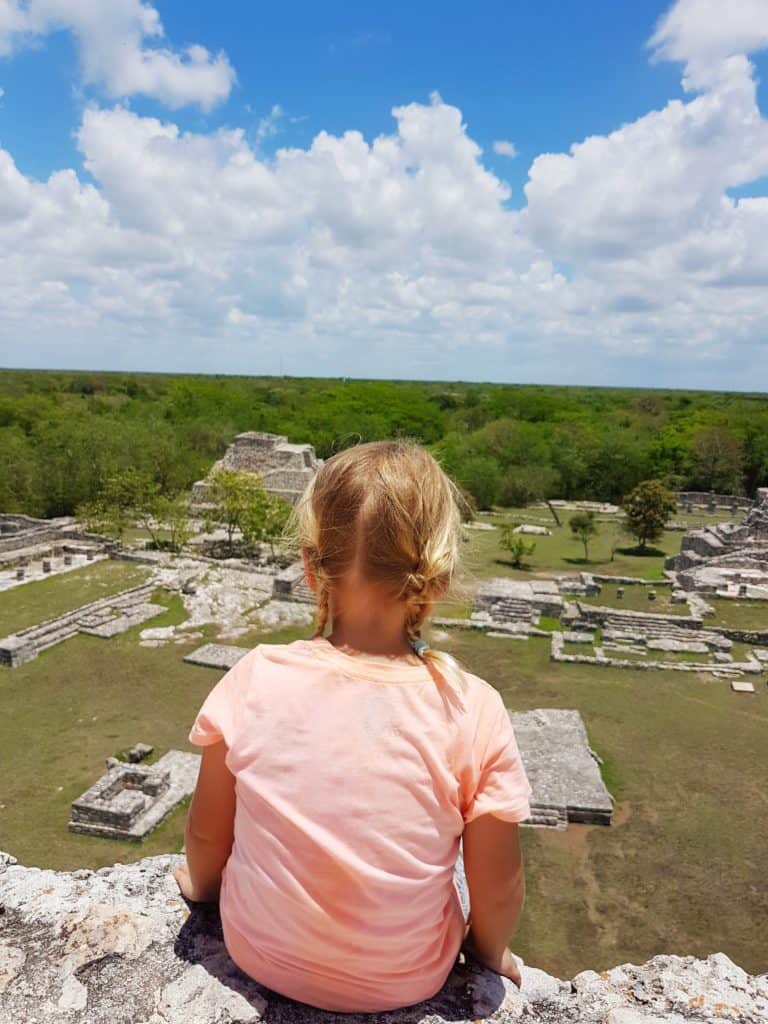
If you want to know more about Mayapan and visiting as a day trip from Merida, follow this link.
Xcambo
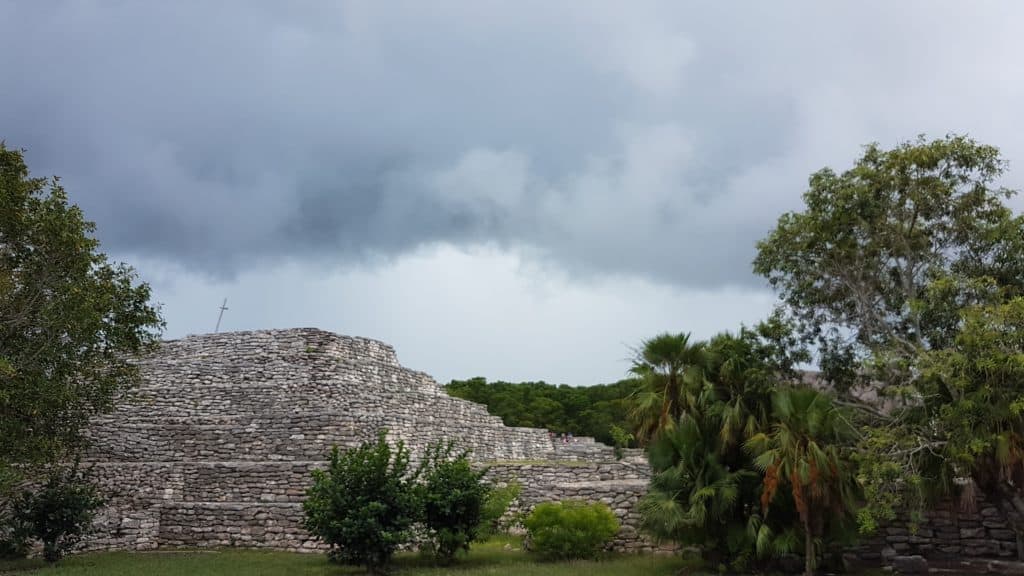
Xcambo, Yucatan
Just outside Progreso in the north of Yucatan, this small site is well worth a visit if you’re in the area. The location of Xcambo is due to it having been a salt and salted fish distribution centre, supplying larger Mayan sites with much-needed supplies.
If you’re considering a day around Progreso, why not check out my article all about things to do in the area
Aké
One hour east of Merida, is the barely known archaeological site of Ake. Despite its relative obscurity today, Aké was one of the most important sites in the north of Yucatan.
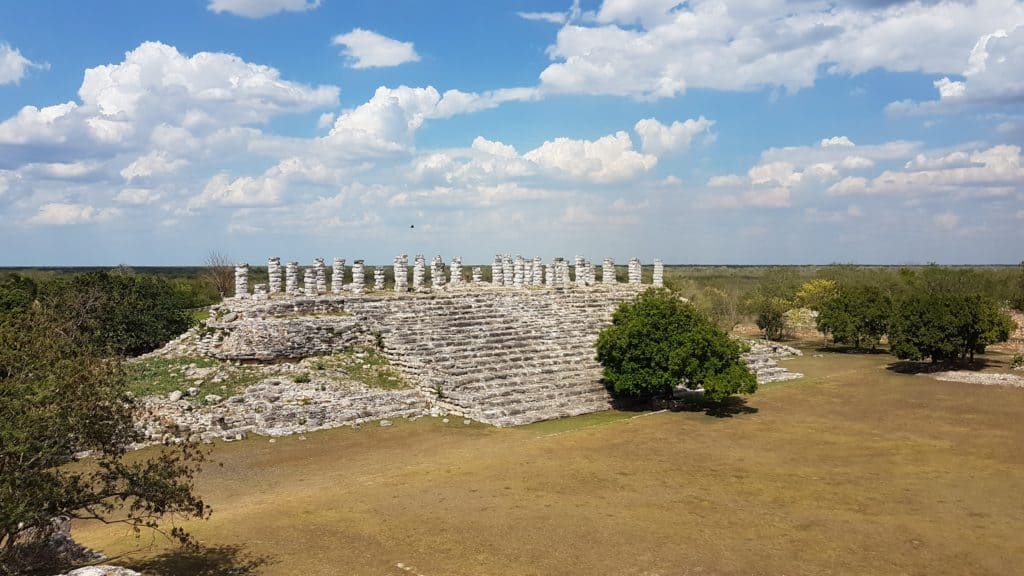
Aké
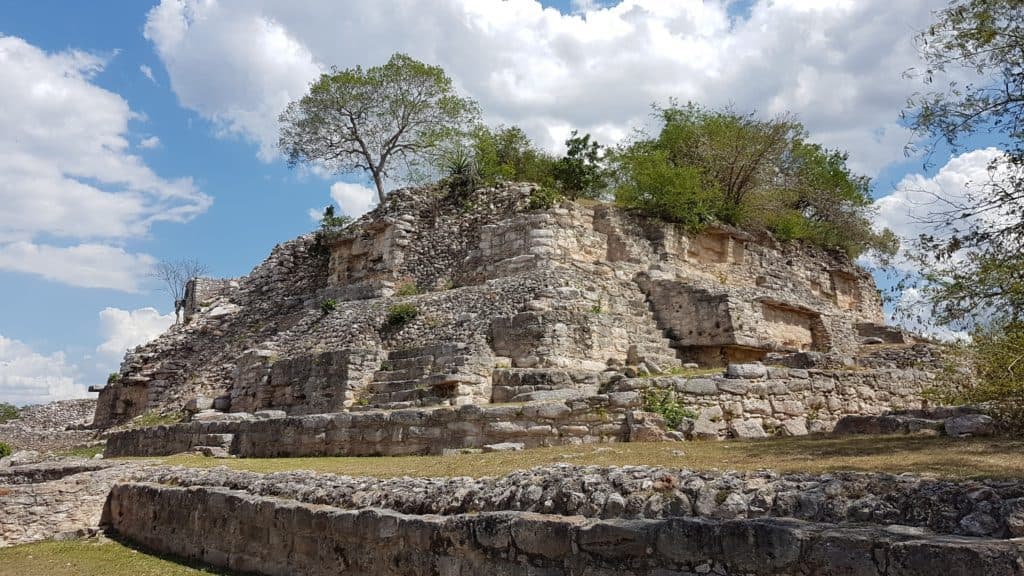
Uxmal
About one hour drive from Mérida, is the large site of Uxmal, the first of the Puuc sites you’ll encounter from Merida. The site is large and will take most of a day to explore.
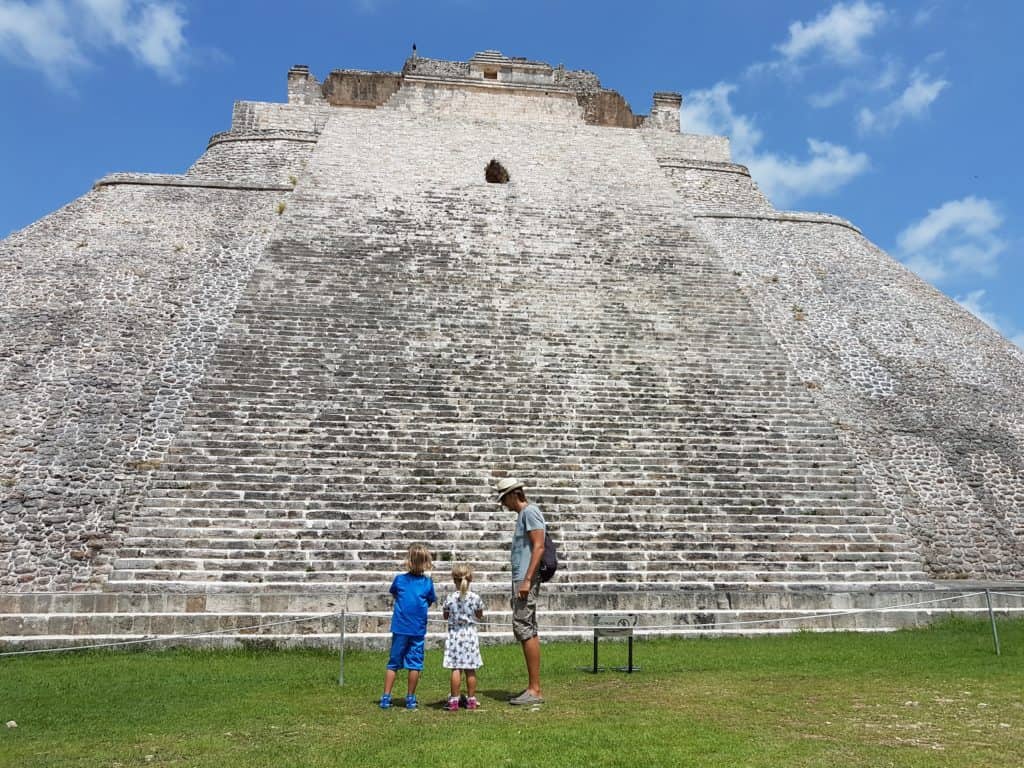
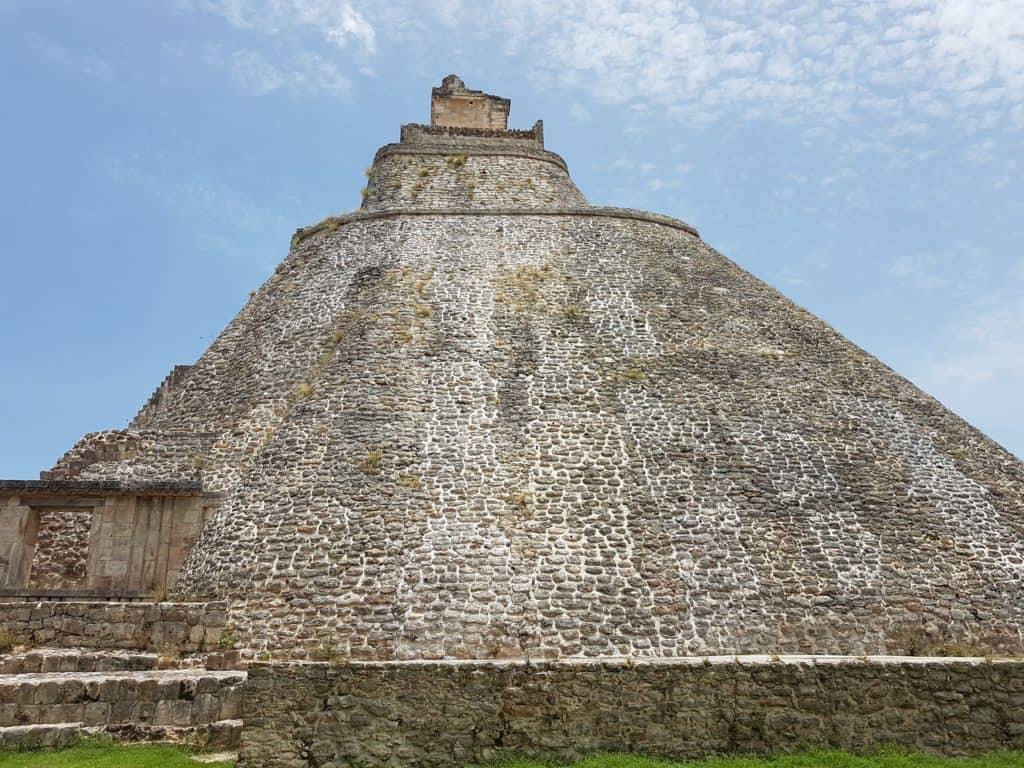
For tips on how to spend a great day exploring here and other nearby attractions, click here.
Uxmal is regularly visited as a stand-alone site but it’s actually officially part of the Ruta-Puuc, a region of southern Yucatan where you can visit four sites (including Uxmal) and one set of caves.
Ruta Puuc
To visit the Ruta Puuc by car, carry on driving past Uxmal and Santa Elena until you see the left turning for the Ruta Puuc. Down here you will be able to visit Sayil, Xlapak and Labná.
Labná
Labná is a truly stunning site and well worth a visit. Most people interested in Maya sites will have seen photos of El Arco (below), an arch that once will have separated two buildings.
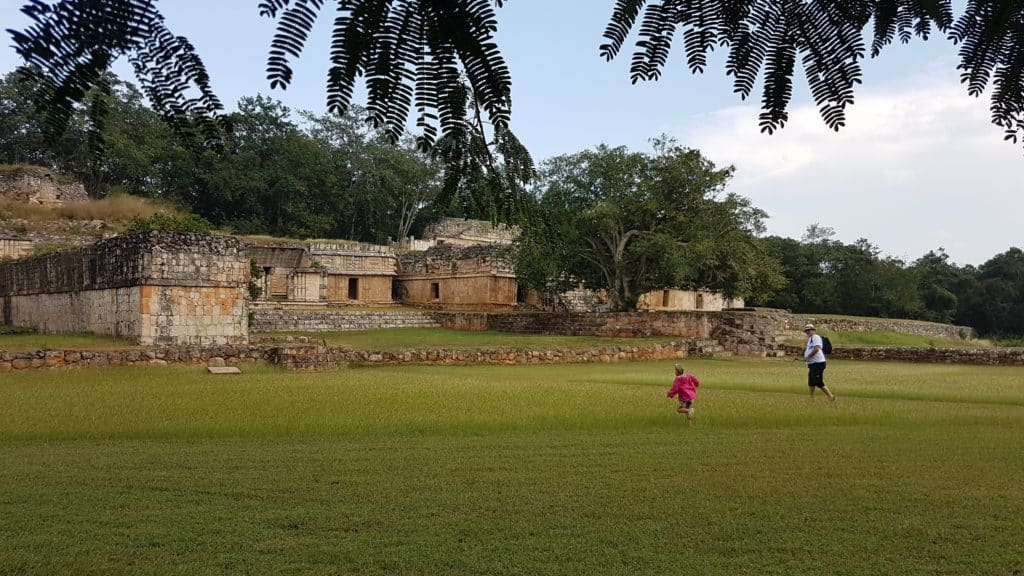
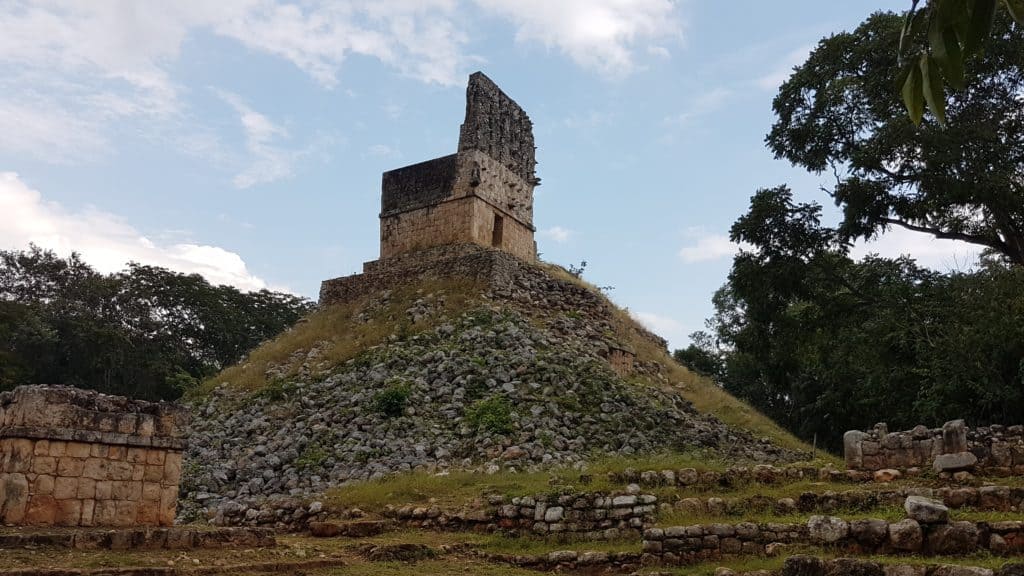
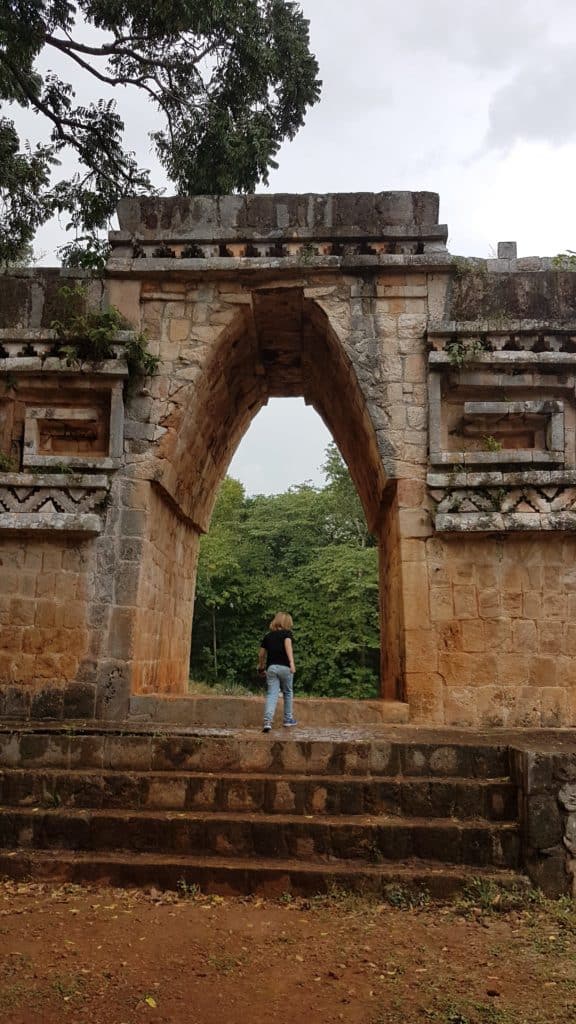
El Arco, Labná
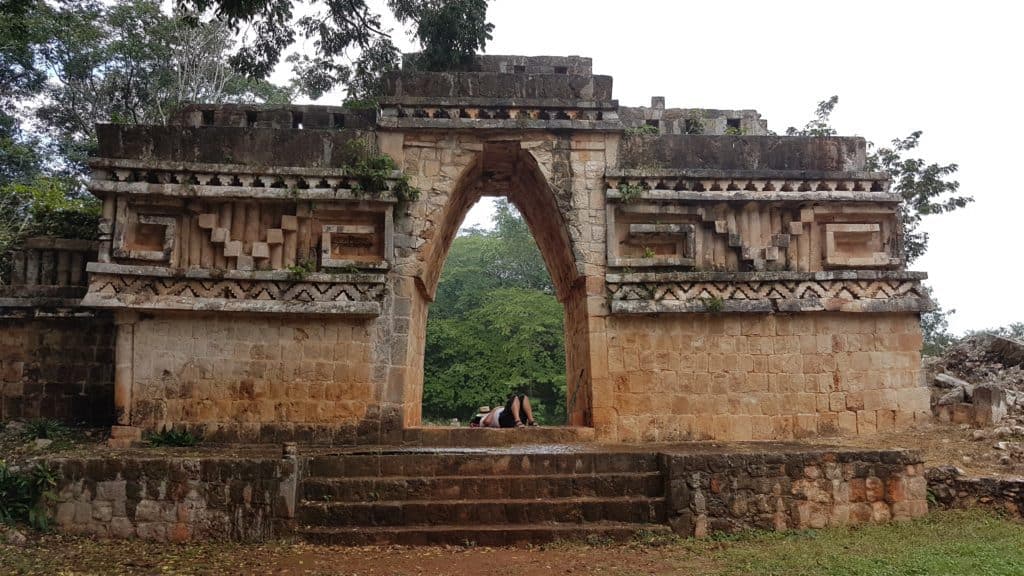
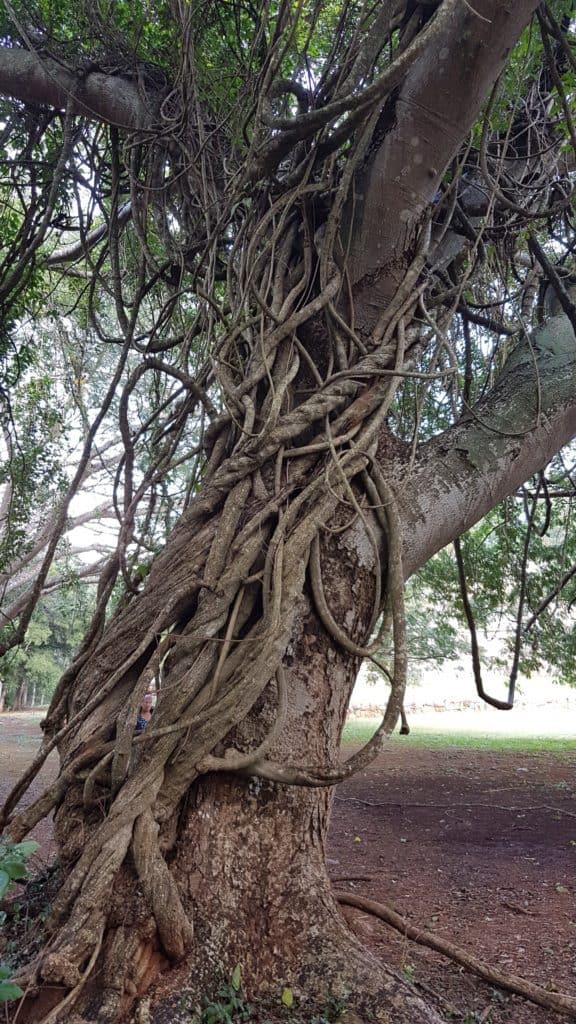
Xpalak
This smaller site is free and really quite lovely. Xpalak means ‘old walls’ in Maya. It is very typical of this region.
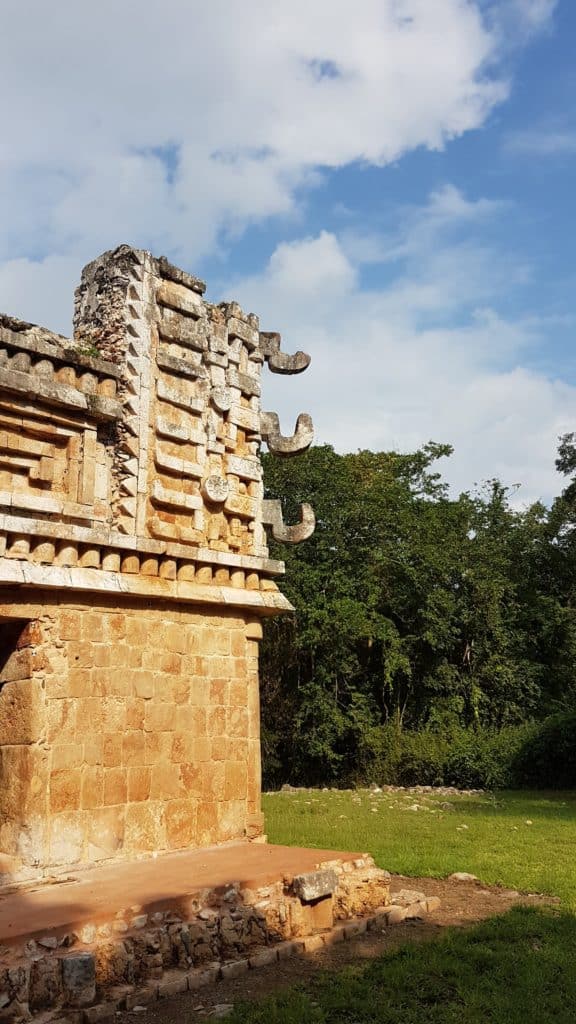
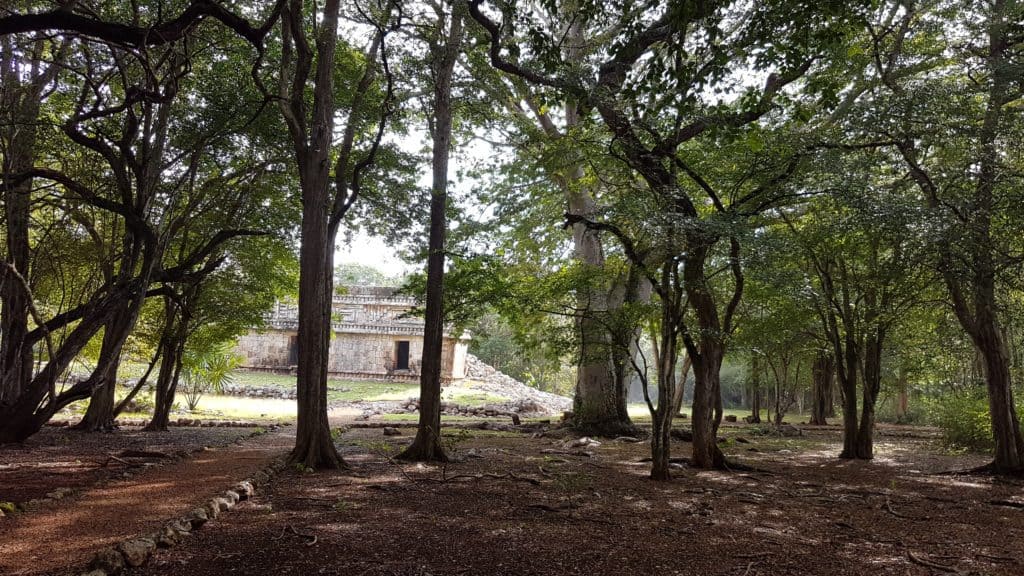
Xpalak
Sayil
This site is quite my favourite in the region. It is best known for its huge Palacio (85 m long) and its enormous expanse of grass in front.
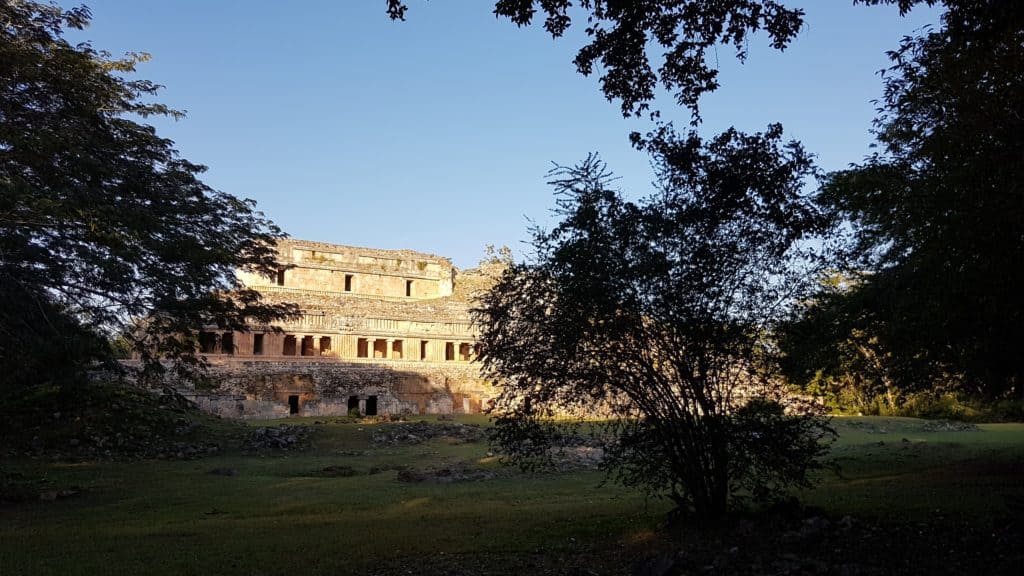
Sayil
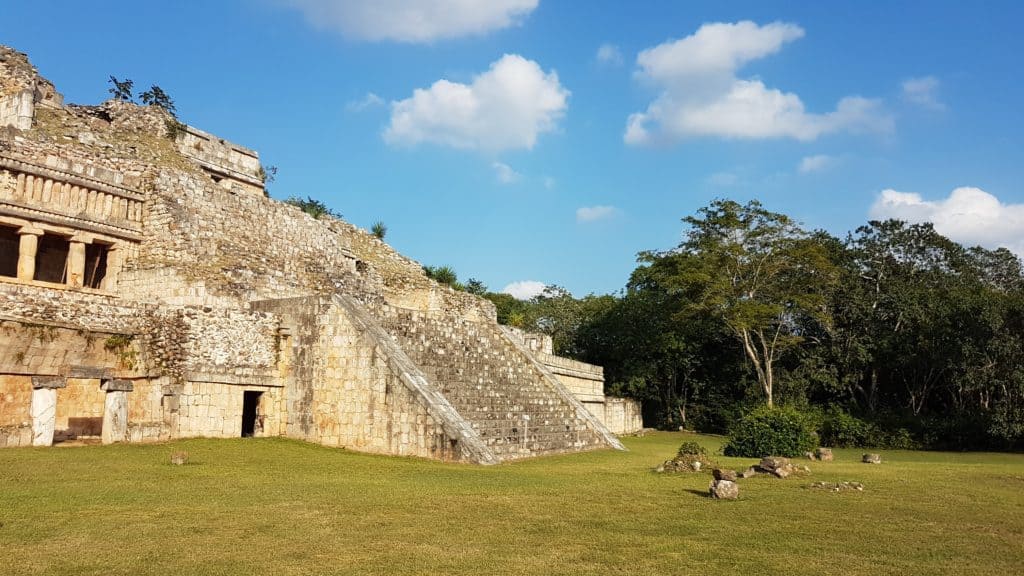

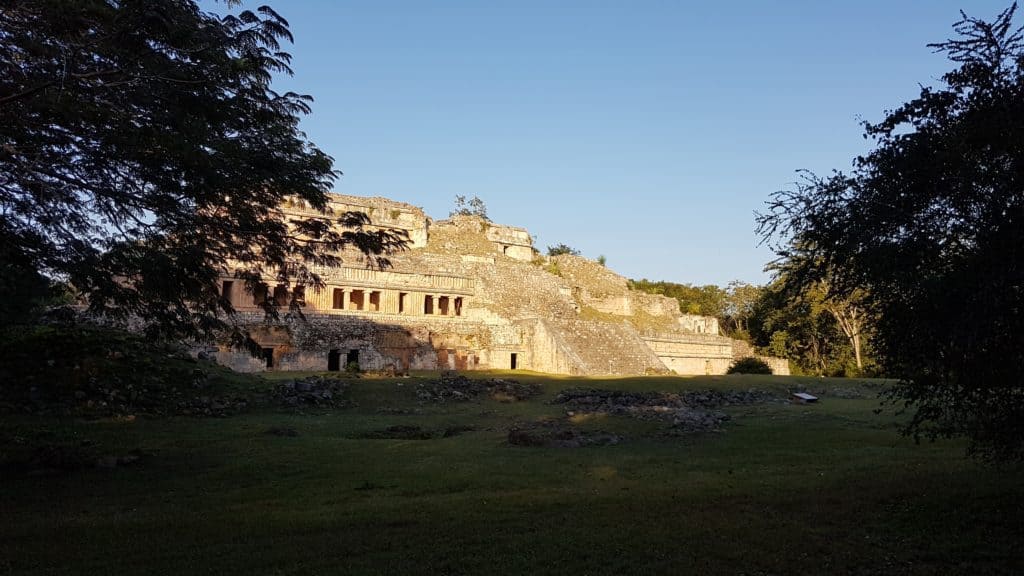
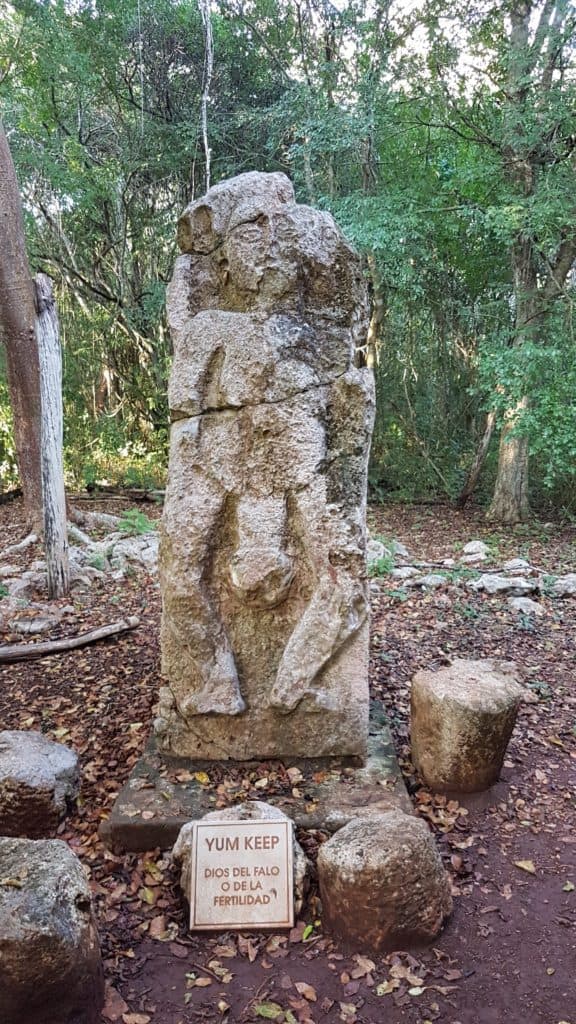
Fertility God
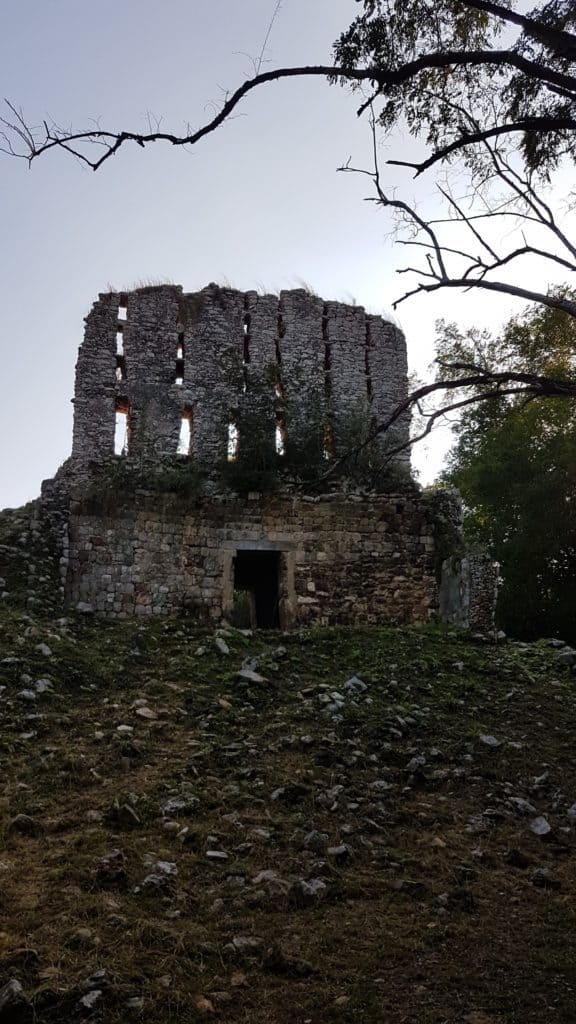
Kabah
Sadly, we didn’t make it into Kabah as we had spent too much time enjoying the other three sites.
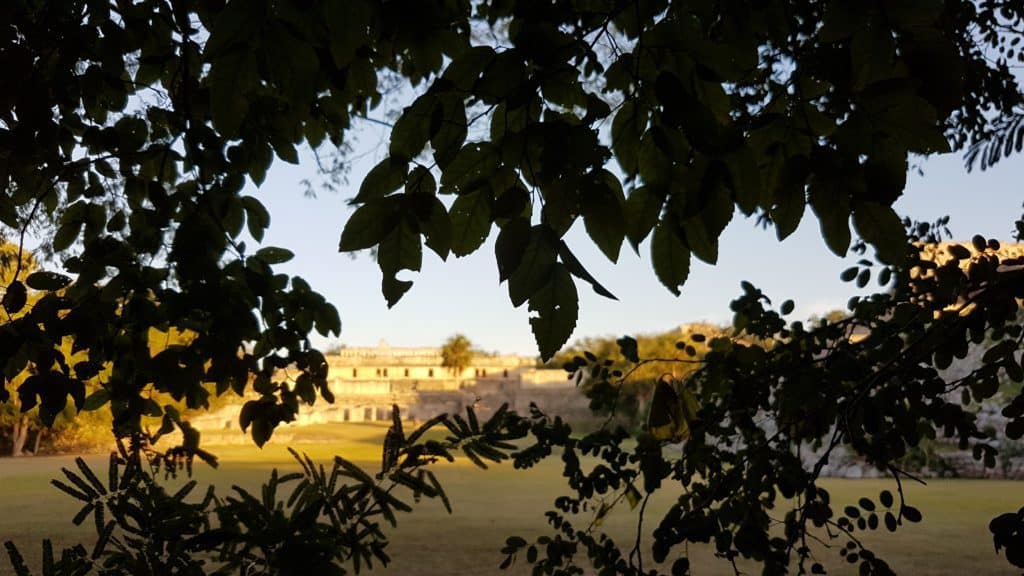
Kabah from outside the gates
Izamal
This famous yellow city is home not only to a convent but also to three Mayan pyramids, all easily accessed while you’re in town.

To learn more about visiting Izamal as a day trip from Merida, follow this link.
CAMPECHE
Edzna
One hour from the city of Campeche you’ll find the magical site of Edzna.
The site was inhabited as early as 400 BCE but became a major city by 2000 BCE. It was only abandoned in 1500s. Its architecture seems to be of three styles, Puuc (despite being nowhere near the Puuc hills), Peten and Chenes.
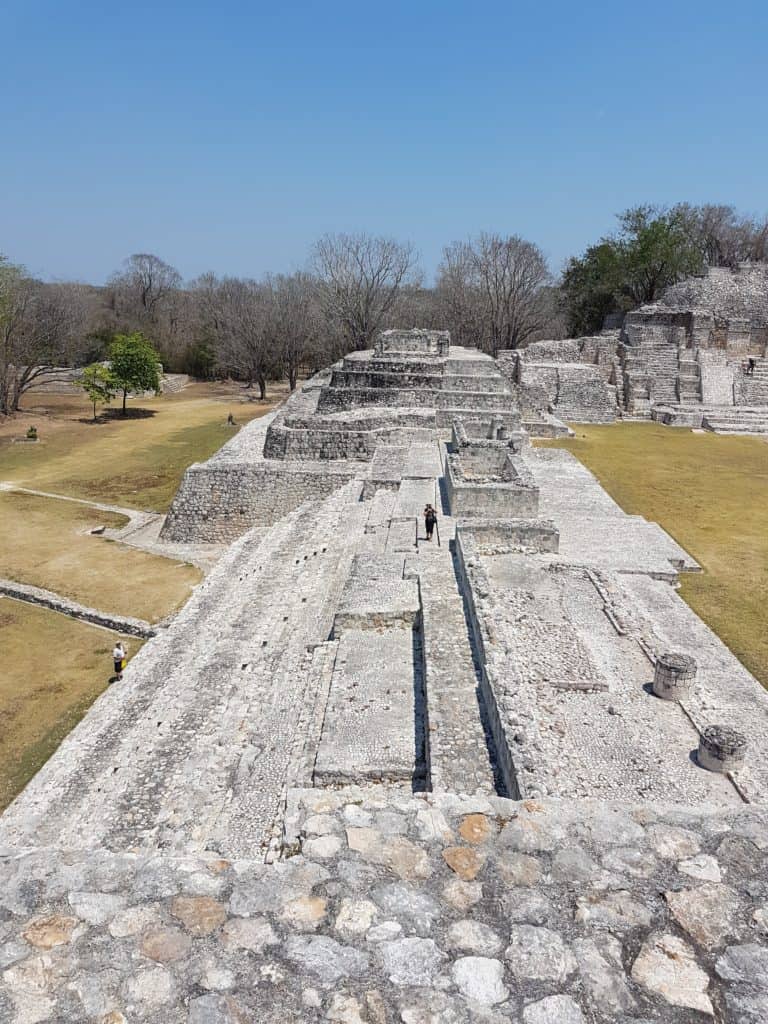
Calakmul
Deep, deep into Campeche is the Calakmul biosphere and deep into the biosphere is the incredible hidden Maya city of Calakmul. Visiting here from almost anywhere probably requires an overnight stay in the region. We opted to stay two nights at the Chicanna Eco Village and had a very pleasant stay.
The drive to Calakmul isn’t easy as once you turn off the main road, it’s then 68km on small and uneven roads. They are paved but certainly aren’t in great condition. The speed limit is 30km/hour.
The highlights of the site are clearly the two enormous pyramids that give spectacular views over the surrounding jungle and even into Guatemala.
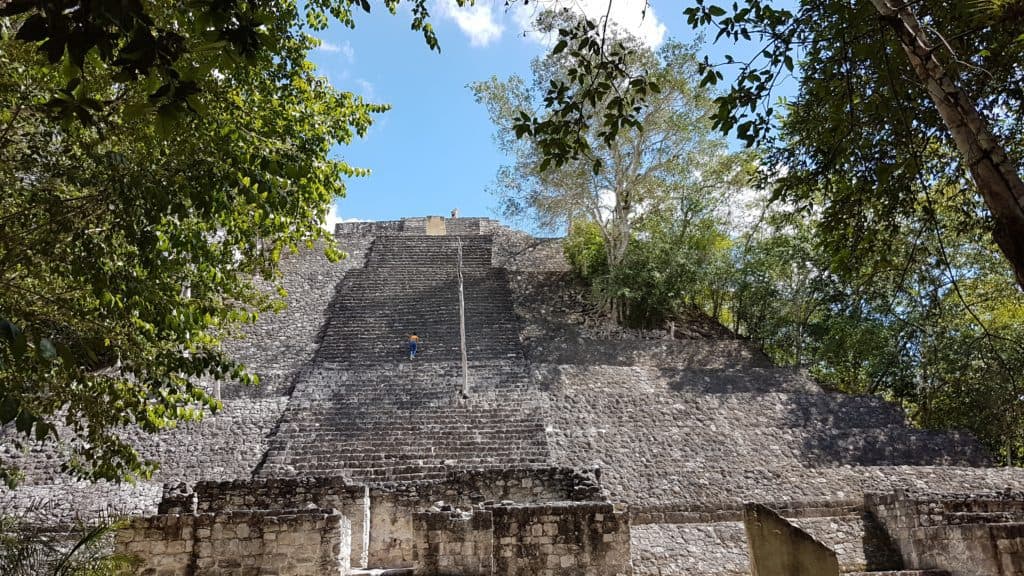

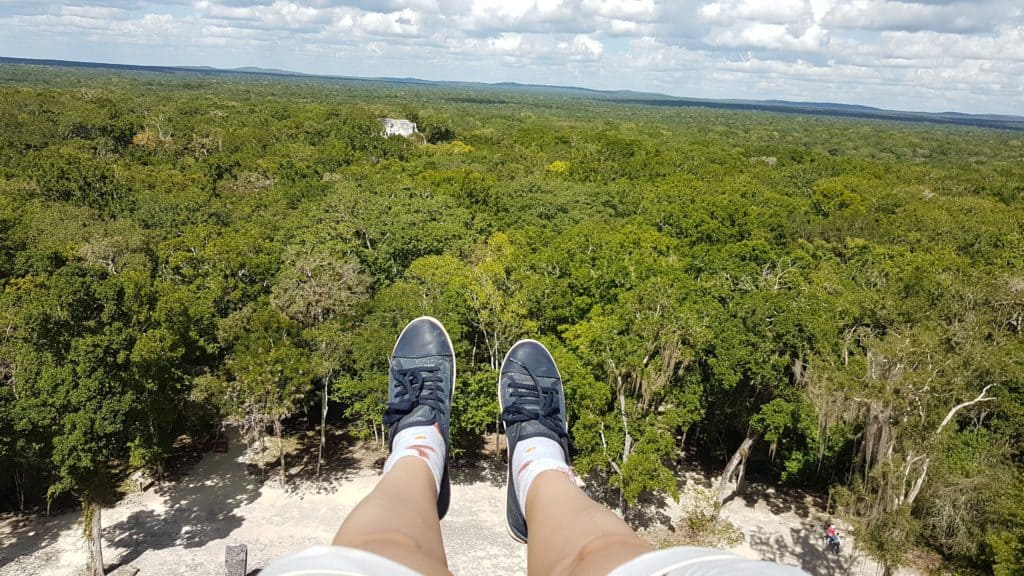
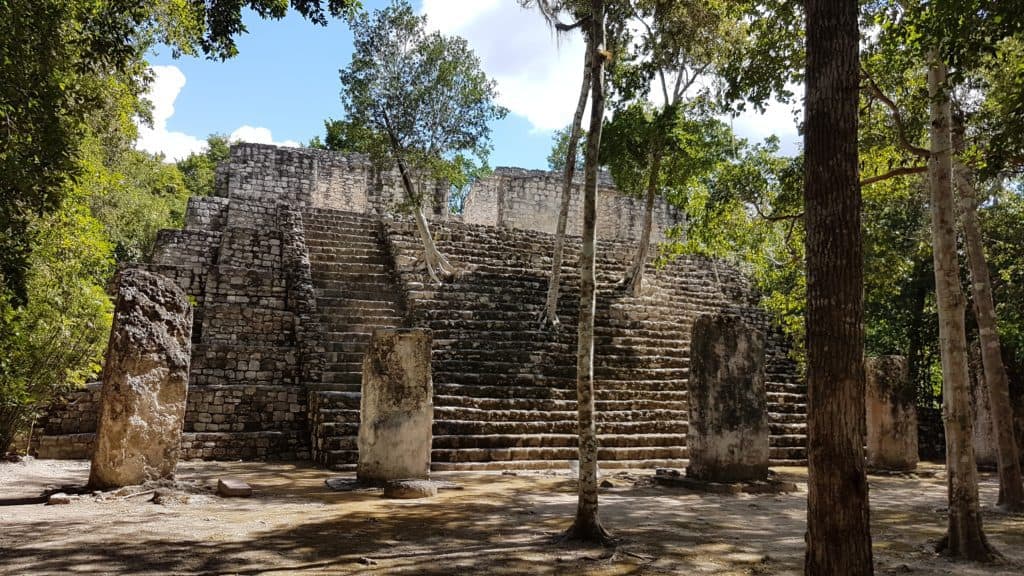
If you mainly want to climb the pyramids then head to the Grand Plaza and buildings one and two first.
There is nothing in Calakmul at all. Take all the water, snacks and petrol you’ll need for the day. Seriously.
Calakmul opens 8 am – 5 pm. You may enter the national park before 8 am in order to be at the site at 8 pm. People are not permitted into the national park after 3 pm unless they’re staying in the campground there.
Cost: Ejido $50 pesos per adult (payable to enter the national park). CONANP $72 pesos per adult and then $75 entry to the archaeological site. $198 pesos in total. As residents visiting on a Sunday we were only required to pay the $50 to enter the park.
The following sites are all within the Calakmul region.
Balamku
Balamku is a pueblo to Calakmul’s ciudad. Just down the road from Calakmul, this is a far smaller site that we fell in love with. Balamku means ‘Jaguar’s Temple’ and the site seems to have been occupied from around 300 BCE. The site shows a variety of different architectural influences, has a pyramid you can climb and the most impressive frieze I’ve ever seen in Mexico.
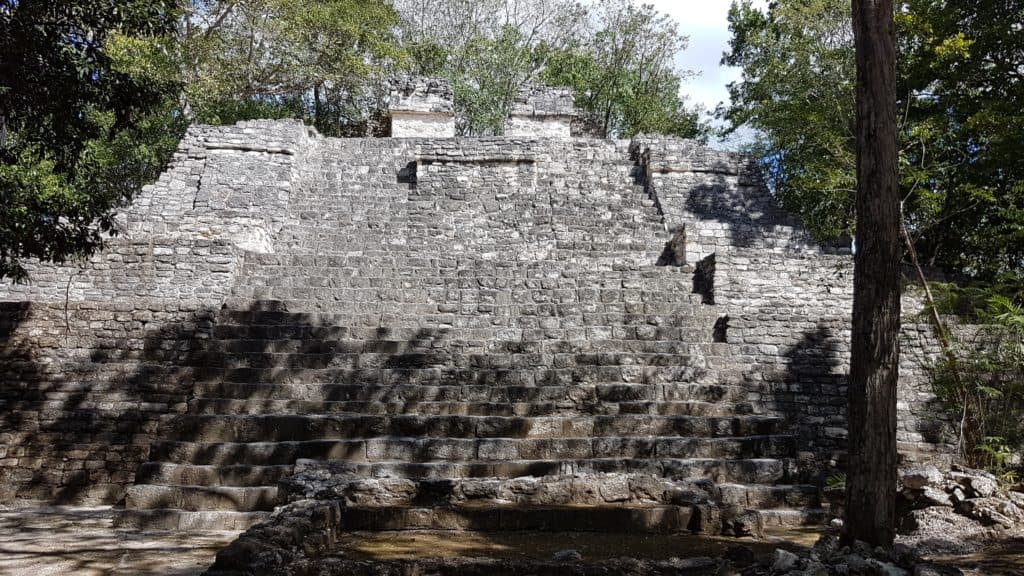
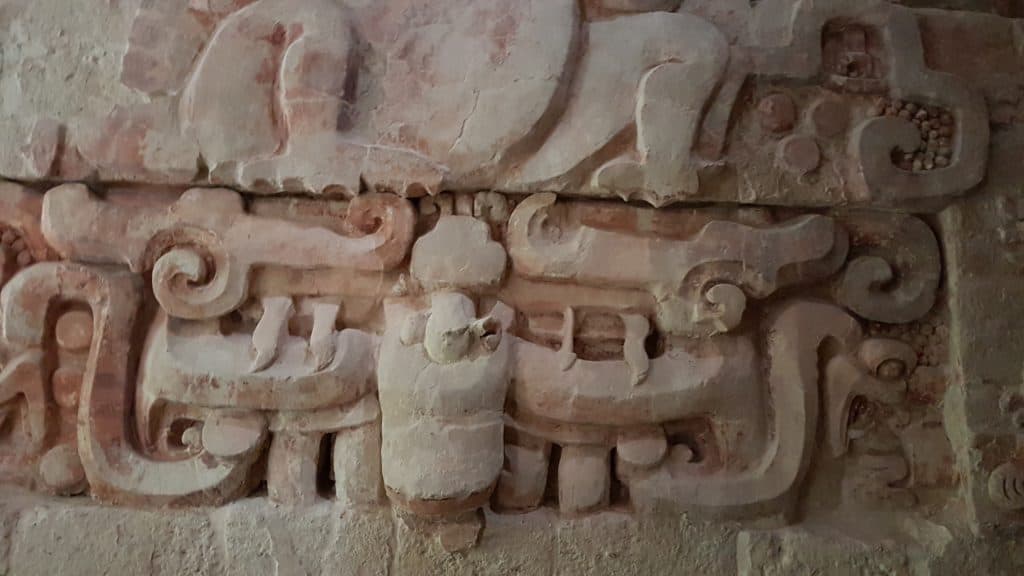
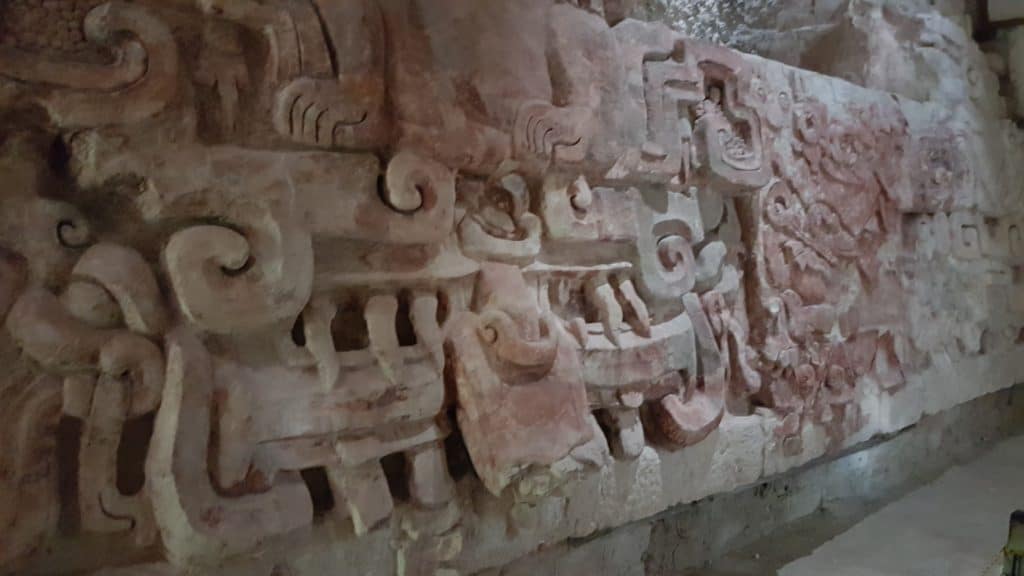
We had this entire site to ourselves and according to the guys who work there, it receives almost no visitors.
Balamku is just a few km further down the road past Conhuas on the road to Escarcega.
Cost $45 pesos per adult.
Chicanná
Right opposite the Chicanna Eco Village is the site of Chicanna. We weren’t expecting much from here, we thought we’d pop our heads in because it was ‘there’ but that was all. Wow were we wrong. We loved Chicanna. We learned that there is no known name for this site, hence it having only a modern name. It is thought that this was a small elitist centre linked to nearby Becan. Is it part of the Rio Bec style of architecture. Again, we were entirely alone here and completely wowed.
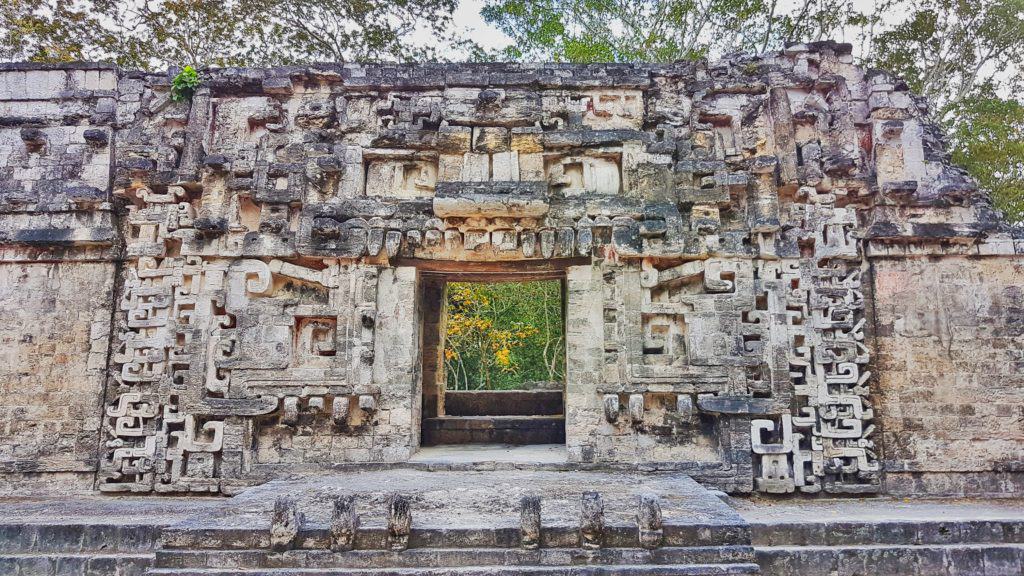
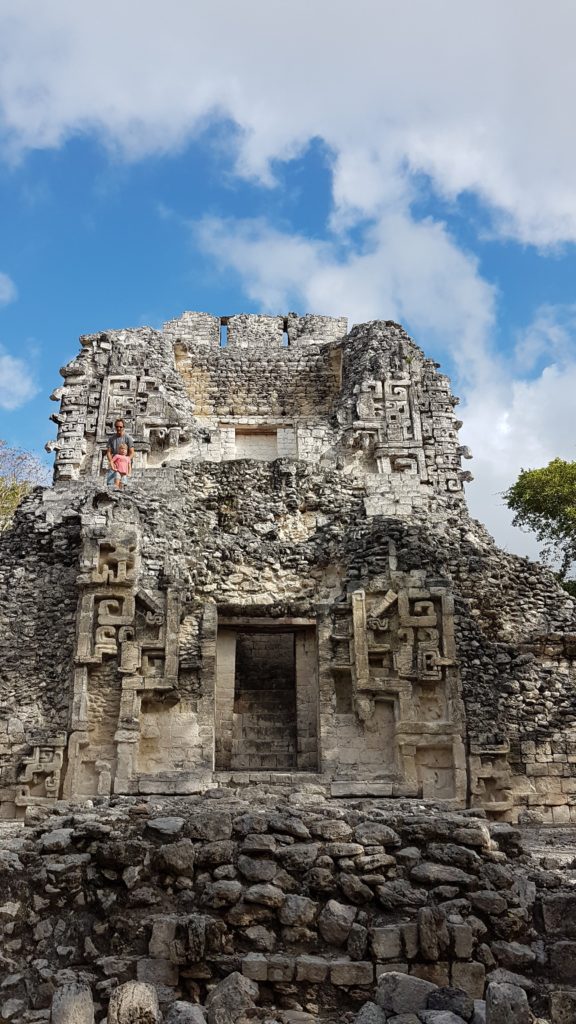
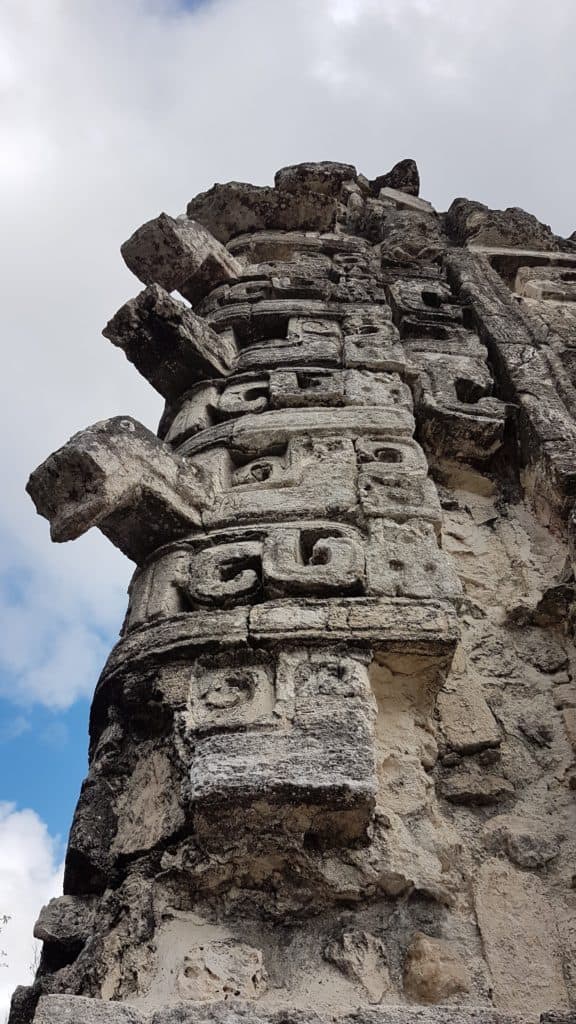
This deceptively large with four separate areas to check out. It also has some of the oldest discovered Maya buildings in the region.
Xpuhil / Xpujil
You may also see Xpujil referred to as Cola de Gato. This is because Xpujil is the Maya name for the plant, Cattail (Cola de Gato). This confused us.
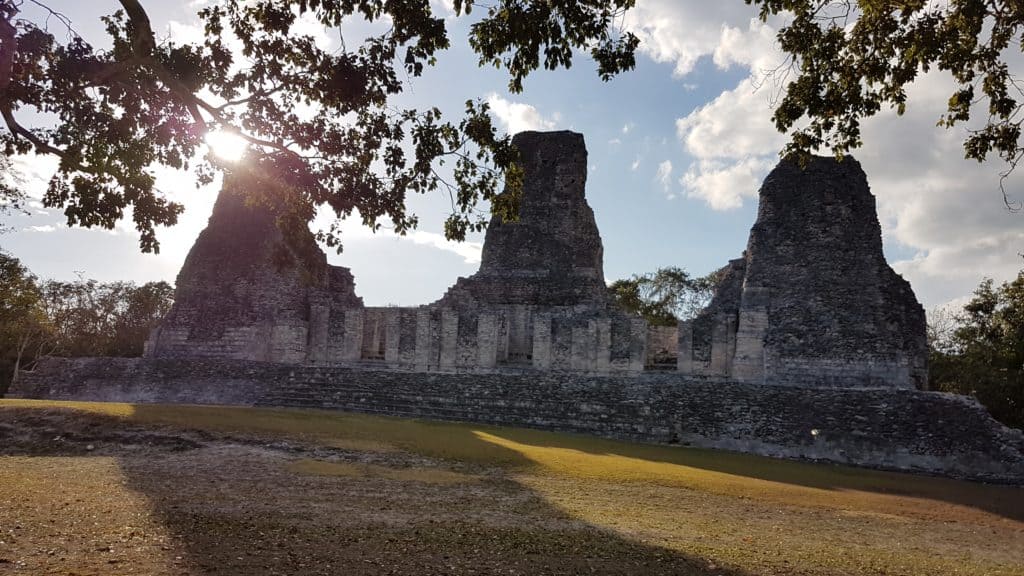

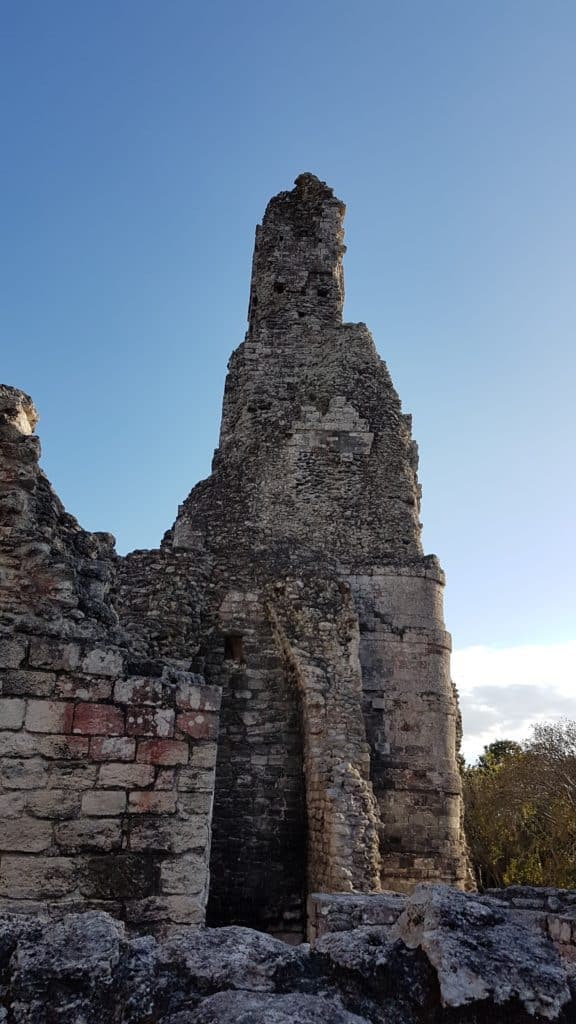
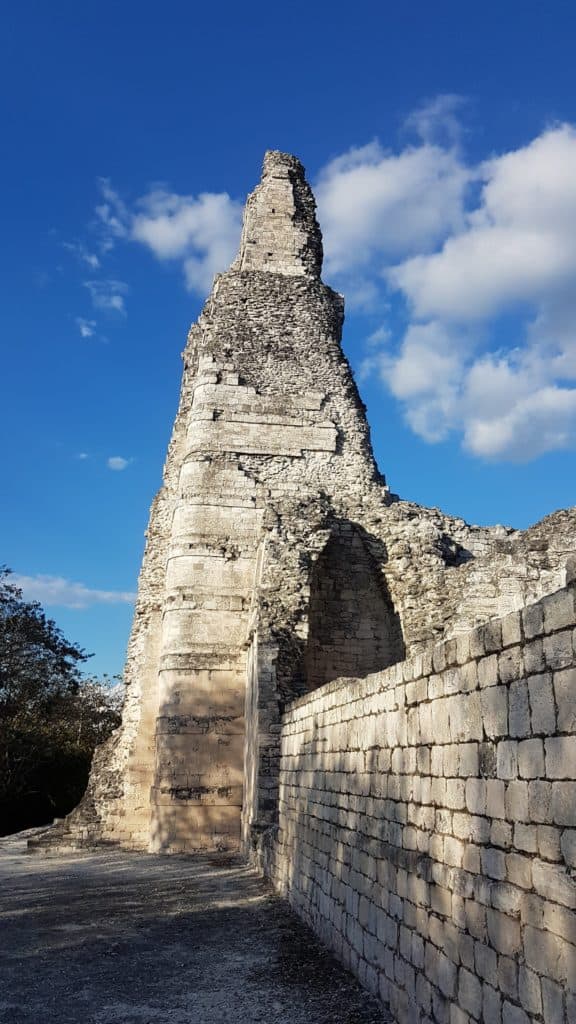
The site is Rio Bec in style. It is thought that the site was occupied between 500 and 1100 CE.
Open 8 am – 5 pm.
Cost $55 pesos per adult.
Xpuhil’s site is located, conveniently enough, in the pueblo with the same name.
Becán
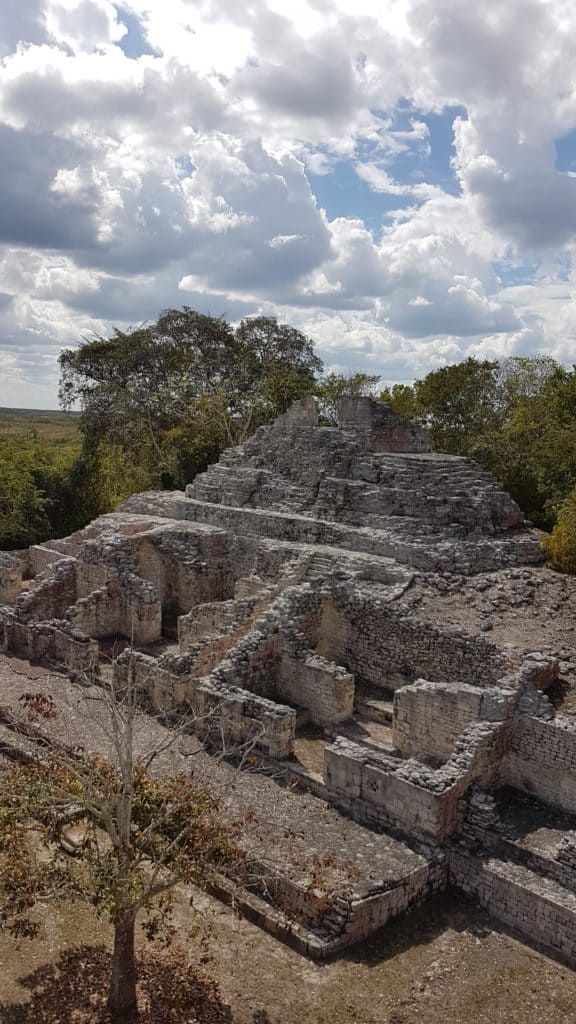

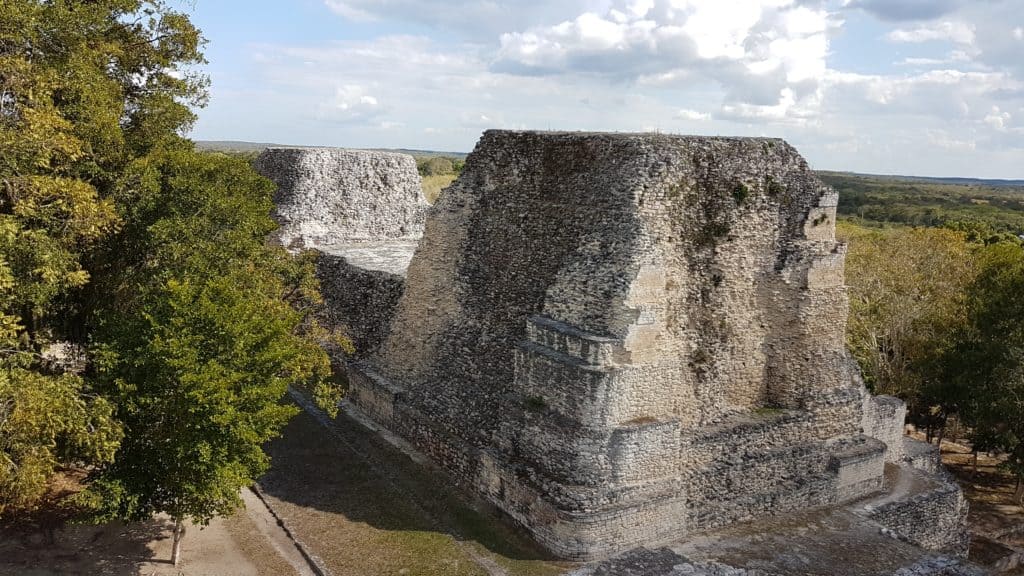
Becan

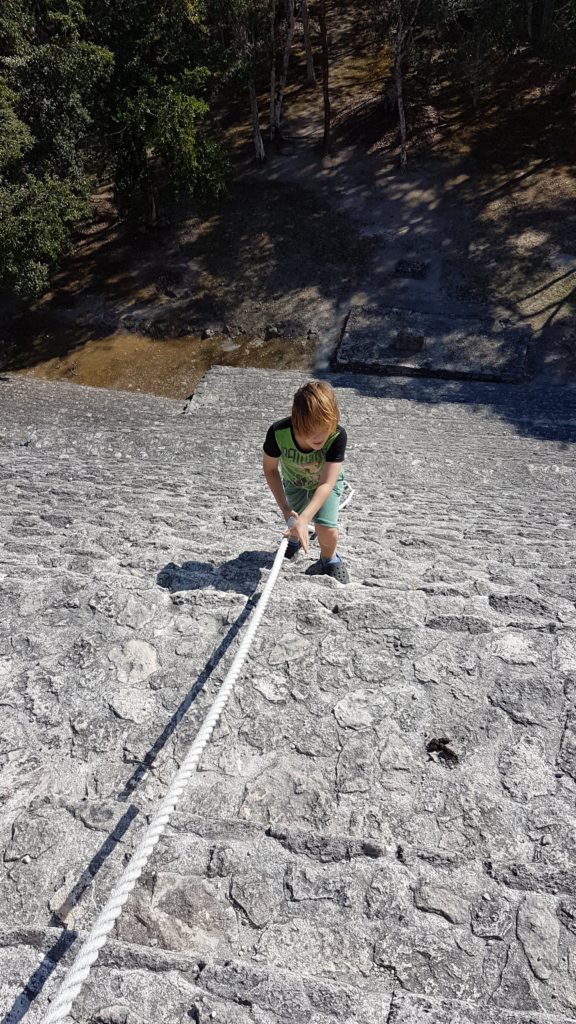
Scaling the large pyramid
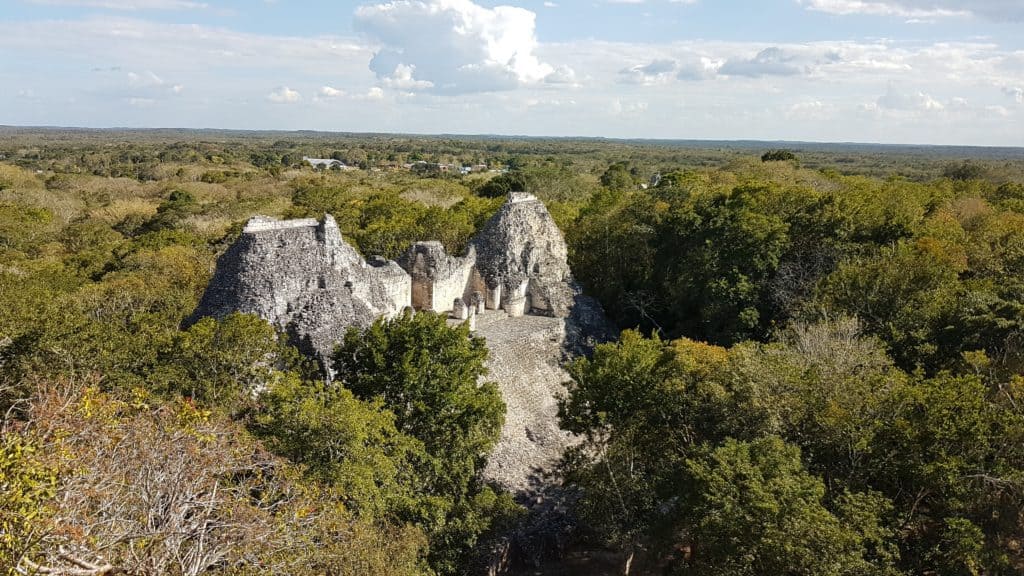
View from the top of Becan’s pyramid.
Becan was, for us, the highlight of our trip to this region of Campeche. We were blown away by the buildings, the fun we could have there and how few other people we encountered here.
Becan means ‘trench’ in Yucatecan Maya and the trench is still clearly visible as you enter the site. There are a number of buildings to visit (and climb). Becan was the political, economic and religious capital of the region when it was at its zenith. The earliest known buildings seem to have been built around 550 BCE and it the height of its power was probably between 600 – 800 CE. The site was abandoned around 1200 CE, when Mitla (above, Oaxaca was flourishing).
Cost $60 pesos per person.
Open 8 am – 5 pm
Becan is between Chicanna and Xpujil.
QUINTANA ROO
Tulum
Right next to Tulum is the Tulum ruins. These are fabulous primarily because of their setting along the spectacular Caribbean coast. The ruins are just outside of town. Once you reach the car park you can either walk or take the trenecito (little train) the 500m walk to the entrance. The ruins include a teeny tiny beach that is supposed to be one of the most beautiful in the world. It might be except it’s always ram-packed with tourists, and an iguana pooed on us when we were there.

Tulum ruins, Mexico
This site is much younger than many others and isn’t considered to be as special but I think I’d beg to differ: the setting is just magical and there’s loads of space to play for the kids. When we lived in Tulum, we never found the site overcrowded but heading back there in early 2018 was a different experience altogether. It was overrun with instagrammers and, honestly, I found it a miserable experience, which is a shame as it is such a spectacularly beautiful site.
If you’d like to find alternative activities in Tulum, check out this link.
Muyil
Muyil is a far lesser known site on the other side of Tulum. It isn’t even in the Lonely Planet and I think I’m glad. It is so beautiful and there’s something special about wandering through the jungle to explore a ruin knowing you’re almost the only people there.

Muyil, Mexico
It’s one of the earliest and longest inhabited Maya sites on the peninsula (from 350 BCE to around 1200 CE) but there’s very little actually visible: a pyramid temple thing and then some other structures deeper in the jungle. We saw some huge spiders on our walk through and there were little cavey type things we’d have explored except we were scared there might be more spiders in them (we’d just had a tarantula in our house at this point).
Muyil is the perfect ruin: surrounded by jungle, quiet and empty. Just magnificent to wander around alone and feel the magic of history and the jungle at the same time.
Cobá
Wow, what a place to finish this list (for now). Also popular with tourists but we got there very early so had much of it to ourselves before tour buses began to arrive. This is an enormous site that the Lonely Planet describes as being ‘cool because you feel like you’re in an Indiana Jones flick’. It’s true. The setting deep in the jungle, that you’re allowed to climb up Nohoch Mul (the great pyramid) and the chance that you could stumble across a jaguar at any moment all do make you feel like a bit of an explorer…even if you are sitting in a bike carriage thing being driven by a small guy who clearly has the strength of a giant.
We had so much fun here, we explored lines of ants, counted frogs, saw weird caterpillars and even looked at the ruins sometimes too.
We didn’t start with the usual starting point, instead, we finished with Grupo Coba, the area that includes a church thing and the pelota court. We had a great time running and exploring here before collapsing back in the taxi. Before that though we climbed the great pyramid and jumped through other jungle covered ruins.
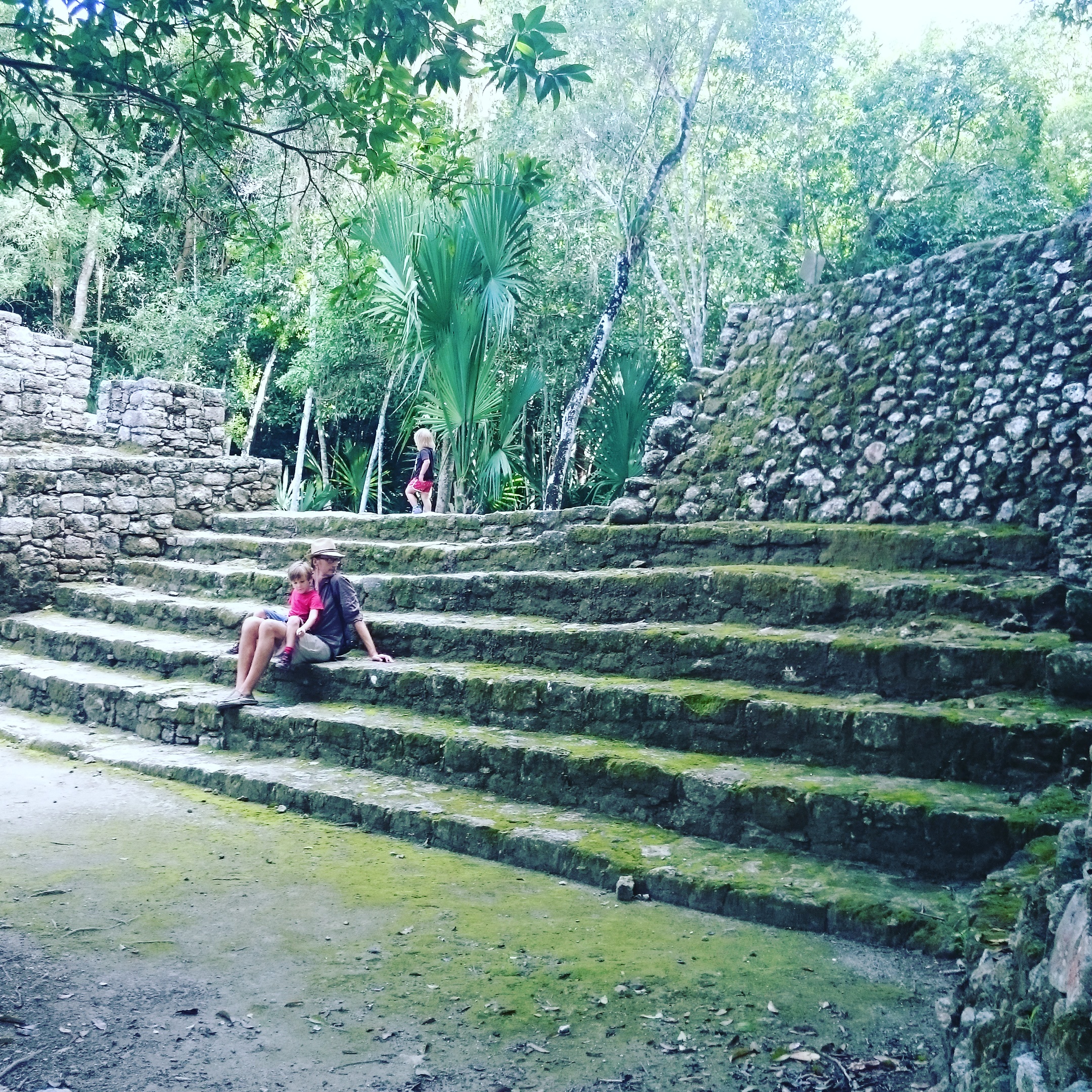


This article will keep on growing as I visit more and more sites. I hope you enjoyed it thus far!

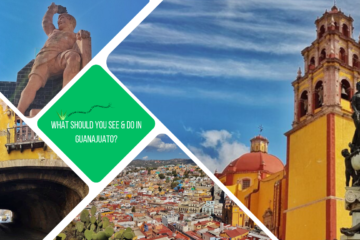
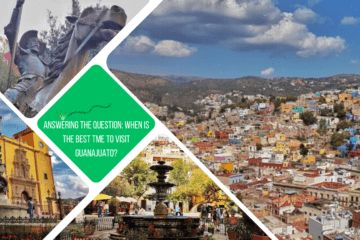
13 Comments
Emese · 18/01/2019 at 10:37 am
No wonder I like your site, Cassie! Love this! Seems that we share the same love of archaeological sites through Mexico – I’ve called them ruins in even recent posts, too… though I should know better. Love your photos and how your kids are explorers of these sites at an early age – you guys remind me of a younger version of us. Great post, and beautiful photos! ?
Cassie · 18/01/2019 at 11:53 am
Thanks so much, Emese! Yes we LOVE exploring and can’t wait to add more to the article. X
Cate · 20/01/2019 at 12:02 pm
This was a great post! How comprehensive! We visited Teotihuacan last year and hope to get to more of these this year! Mexico is my new favorite place to travel!
Dylan · 20/01/2019 at 8:57 pm
What a thorough guide! I can’t believe I missed Teotihuacan, Monte Alban, AND Mitla when I went through Mexico City and Oaxaca– but it looks like I’ve missed a whole lot of other sites, too! I’d never heard of some of these (Dzibilchaltun??), so you’ve given me a lot to look forward to. Cheers!
Want To Explore The Yucatan Peninsula? Best Day Trips From Mérida · 13/12/2017 at 1:35 pm
[…] check out my two articles, here and here, for general information about ruins in Mexico and the Yucatan […]
Everything You Need To Know About The Main Archaeological Sites On The Yucatan Peninsula - · 26/12/2017 at 11:39 pm
[…] If you think I’ve missed anything, got anything grievously wrong or you have any questions, please do drop me a line as I’d be happy to help. My particular area of ‘expertise’ is probably, which ruins are most fun for kids. For a slightly more thorough view of ruins, do check out my whizz through Mexican ruins. […]
Top Tips for Visitors to Mérida (Mexico) - or things you really should know · 17/01/2018 at 9:31 pm
[…] So there you have it. My top tips for getting the most out of trip to Mérida (Mexican Mérida, that is. I don’t know about other Méridas!). However, if you have more time in the region and fancy some out of town trips, why not consider: a day trip or two or a visit to a ruin or two? […]
Exploring Mexico City: Frida Kahlo Museum - The Dreampacker · 24/01/2018 at 4:26 pm
[…] way around the centre and visit some archeological sites (although, if you want to check out the coolest Mexican ruins, you should go to the super amazing blog of my friend Cassie, she’s a British blogger that […]
Oaxaca (Mexico): A Perfect Holiday Destination For Families · 06/02/2018 at 10:38 am
[…] amazing and the kids had the best strawberry and watermelon smoothie thing. Then we got the bus to Monte Alban for the second time. We all LOVE it there. It’s so big and the air is so clean and the kids […]
Finding Fun For Kids In Merida, Mexico · 09/02/2018 at 3:25 pm
[…] centres all over the place. And, of course, we’re only thirty minutes from the beach, from incredible ancient ruins, spots of serious natural beauty and even cenotes (not sure about cenotes? Then check out this […]
Sian Ka'an Reserve: How To Explore The Best Natural Spot in Tulum · 19/02/2018 at 8:30 pm
[…] as we already visited several Mayan ruins (Coba, Chichen Itza and Tulum). But when I read on Cassie’s guide of the Mexican Ruins that it’s a well-kept secret and a magical place, I think that maybe we should have included […]
Mayapan Ruins Plus Cenote: A Great Day Out From Merida · 05/04/2018 at 11:06 pm
[…] is one of my favourite archaeological sites in the whole of Mexico. Not only is it close to Merida, which makes it a perfect easy day trip, but it’s also far […]
Why Do We Travel With Children? Hear From Adventuring Families · 30/04/2018 at 10:43 am
[…] daughter’s fourth birthday this weekend. Her celebrations included exploring the Mayan jungle ruins of Muyil and an exciting adventure in the Sian Ka’an biosphere just outside Tulum (blog coming soon!). […]